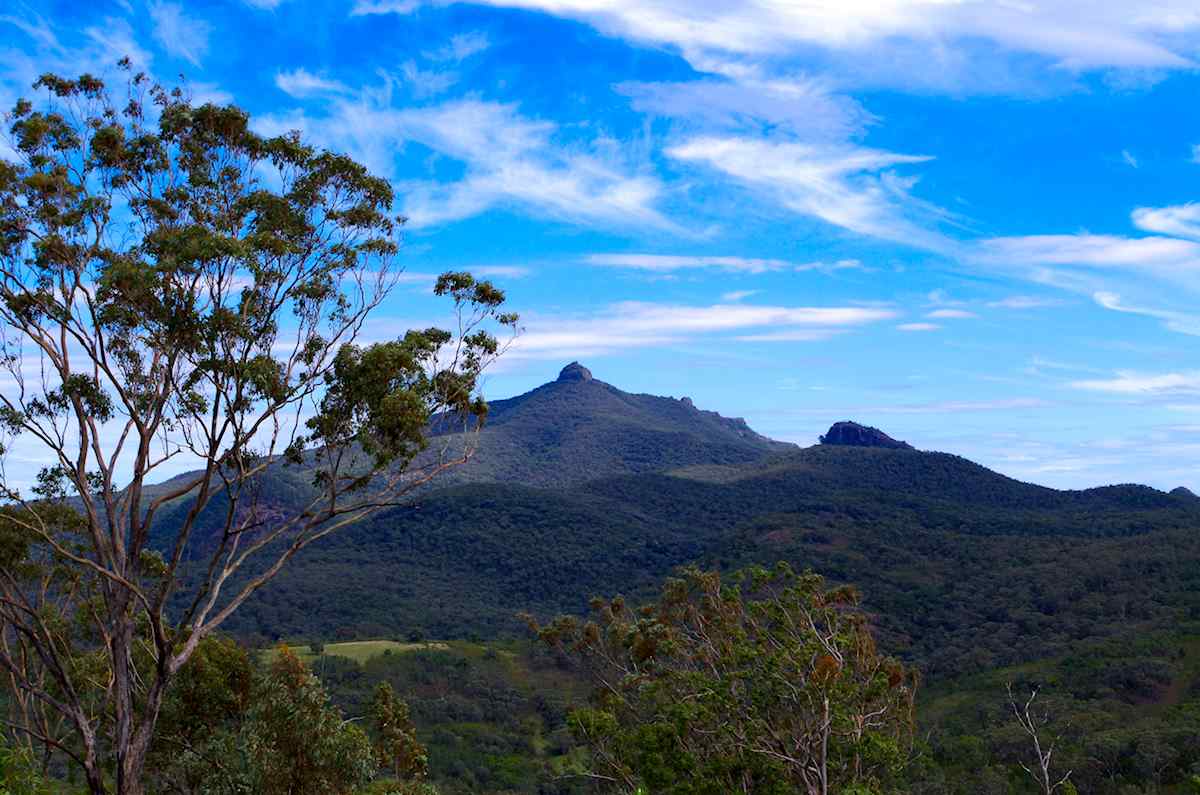On September 5th, 2019, I celebrated travelling and living on the road for two years.
The camper certainly looks ‘lived in’ but everything is still fine. It is a bit bruised and battered maybe, but this is certainly only cosmetic. I have had a couple of altercations with various trees over the time and I can assure you the trees ALWAYS win…
I decided to write a special post to celebrate the earlier part of my journey, before I started this blog a bit over a year ago. I visited many interesting places, so I thought I would chronicle some of my favourites from then, before I had this website to showcase my travels.
I have included a few of my better photos of some wildlife I encountered, too. There are lots of cute animals out here, but some are not so nice and I have seen a few feral ones along the way, too.
Bald Rock and Boonoo Boonoo are two national parks located very close to each other near Tenterfield in northern NSW. Both are spectacular but for different reasons.
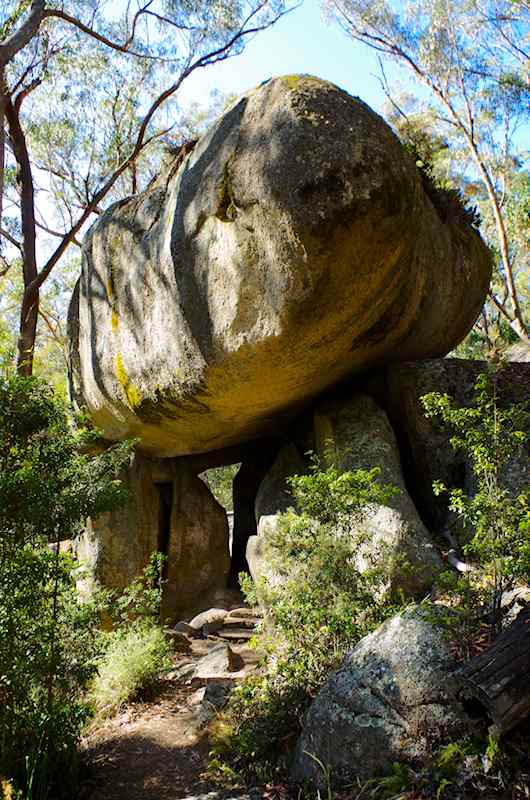
Bald Rock is a massive granite intrusion that has been pushed up from deep underground and partly exposed through erosion. Much of it is still underground and you really only appreciate how amazing this enormous chunk of rock is when you climb it. There are two ways to do this; the hard way, if you really feel the need, consists of walking a very steep path directly up the sheer rock face, which is around 200 metres high.
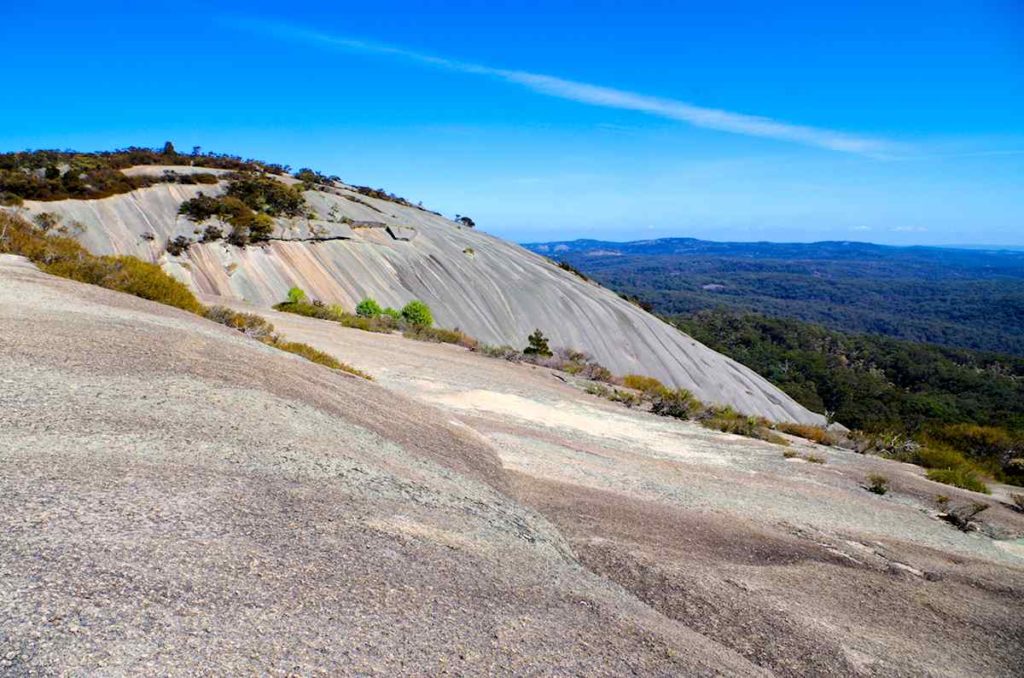
But, if you are much more sensible, a very scenic path meanders through the bush and approaches the rock from the back. The amazing view of the surrounding countryside is suddenly revealed when you finally emerge onto the rocky summit.
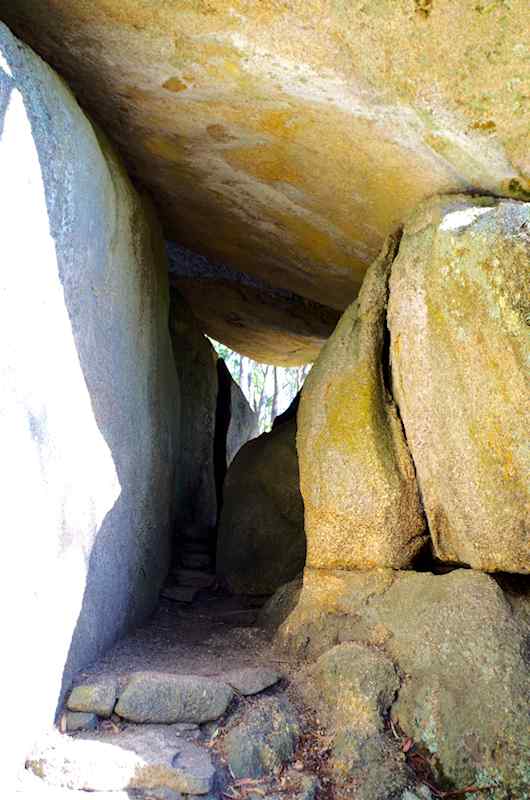
There are many other remarkable rock formations in this area and the path takes you through some spectacular examples of balancing rocks and natural arches. It seems that it would be impossible for these formations to be created and they almost appear manmade.
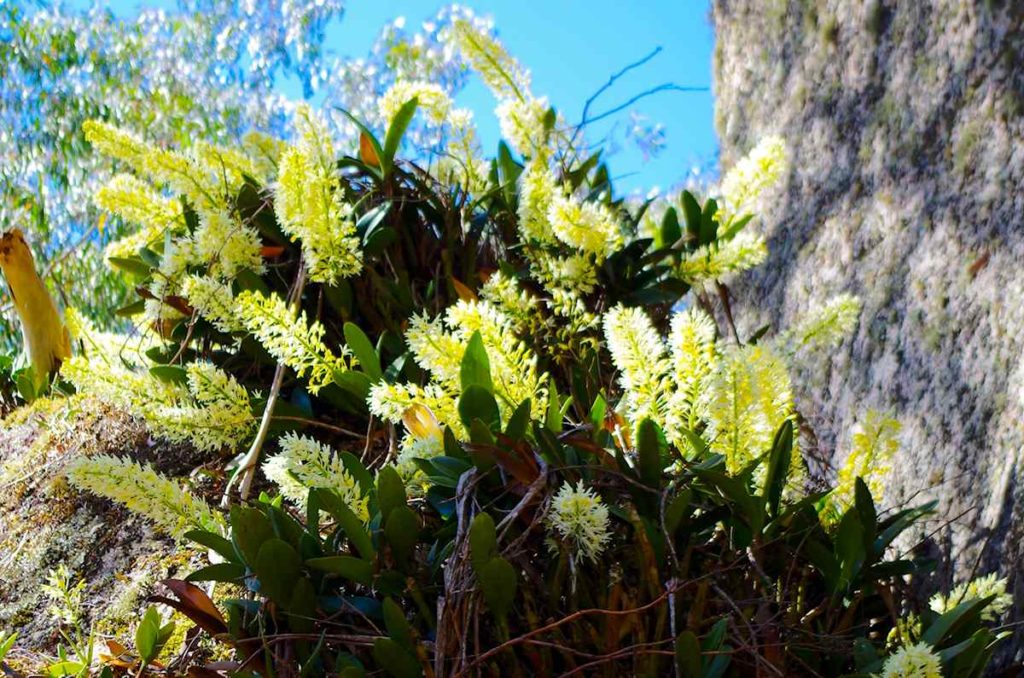
When I was here, these amazing rock lilies were in flower; these natives cling precariously to the sheer rock surfaces.
Wildlife Portrait
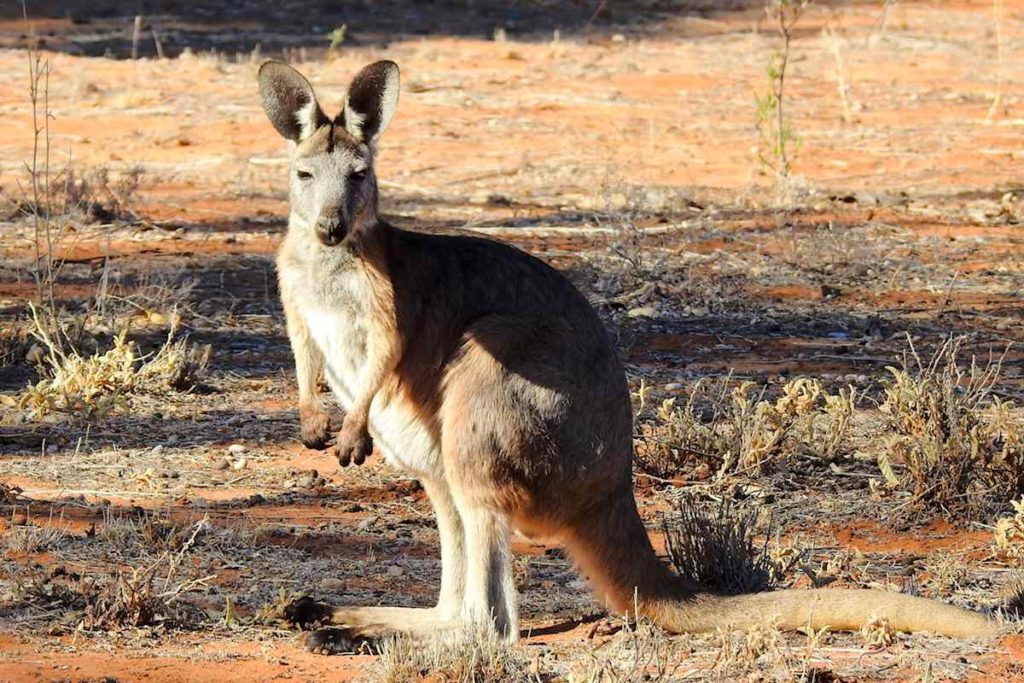
This watchful fellow is a Euro. Euros are smaller than kangaroos but have wonderfully big ears and they always look just a little bit scruffy, which is so cool.
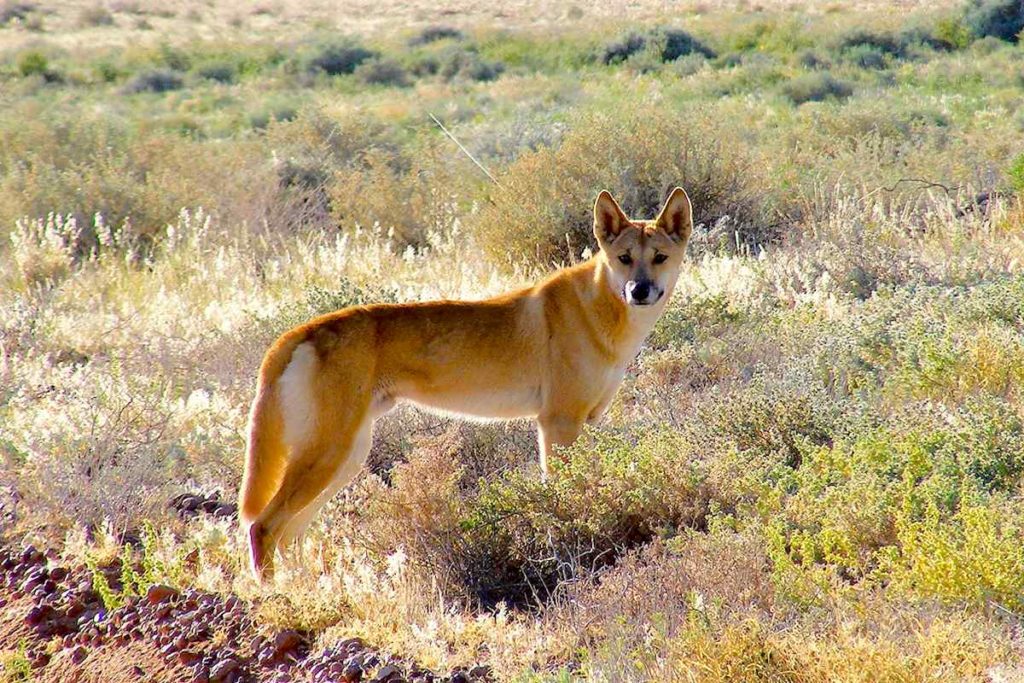
I love seeing dingos in the outback and hear them howling at night, which is such a mournful sound. They normally run when they see people (usually with good reason) but they are also very inquisitive, so will often come in for a closer look if you make a bit of noise.
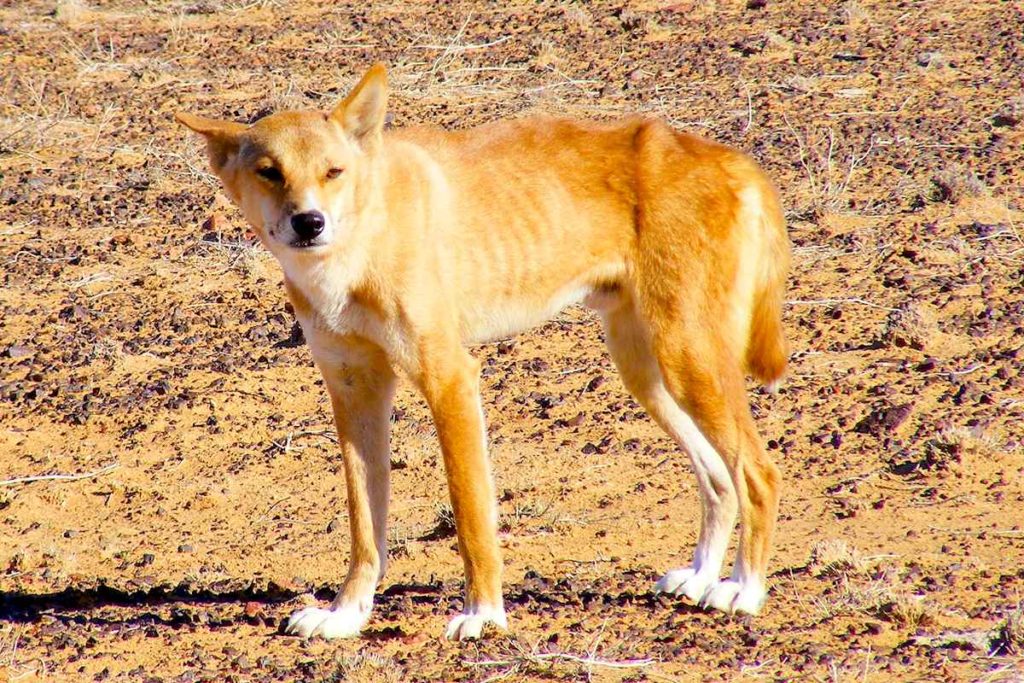
This poor dingo looks like it hasn’t had a decent meal for quite a while!
Boonoo Boonoo (pronounced ‘Bunna-Bunoo’)
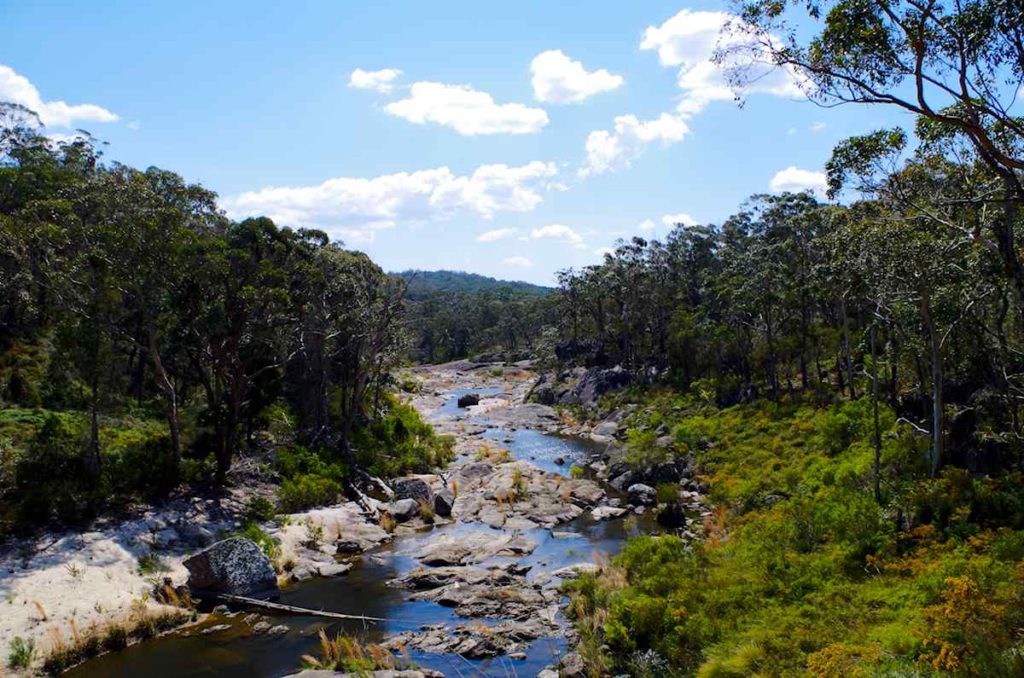
This is the name the local Aboriginal peoples gave the area and reflects the lack of decent food that was available in this wild and rocky country. However, kangaroos and wallabies now inhabit the bush here.
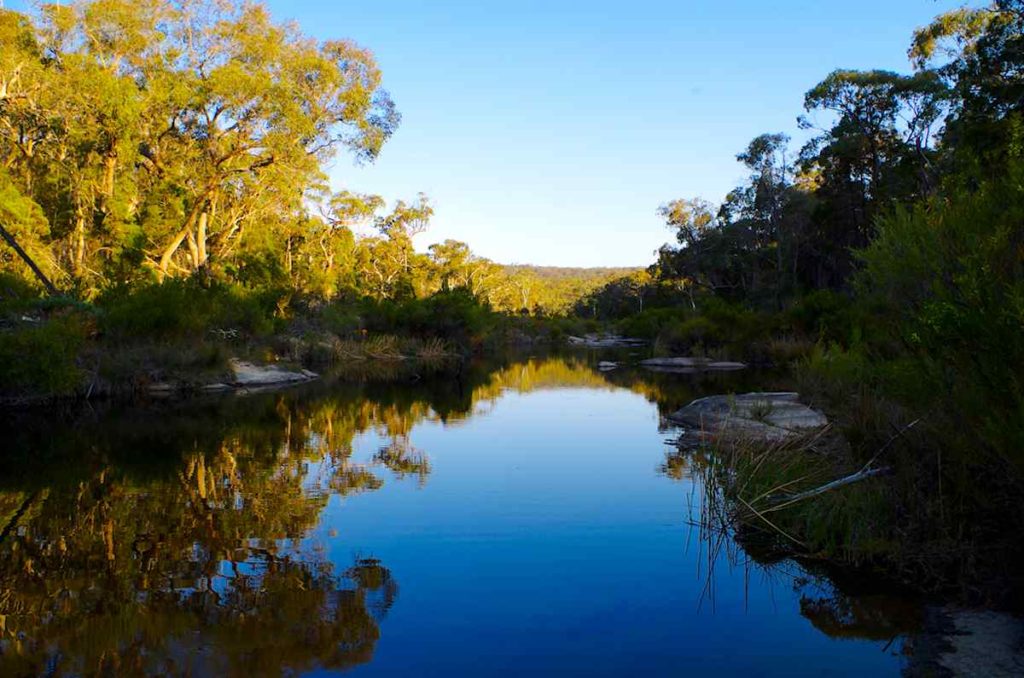
The river courses through the park and there was plenty of water flowing when I was here; perfect for enjoying an evening sojourn with a glass of wine, while keeping an eye out for the local wildlife.
Wildlife Portrait
There are platypus living in the secluded pools here. However, these are pretty secretive animals and it is actually very hard to catch a glimpse of them. Even sitting very quietly and still on the banks in the evening, you might be lucky enough to just hear a splash of water as one of these creatures quickly grabs a breath.
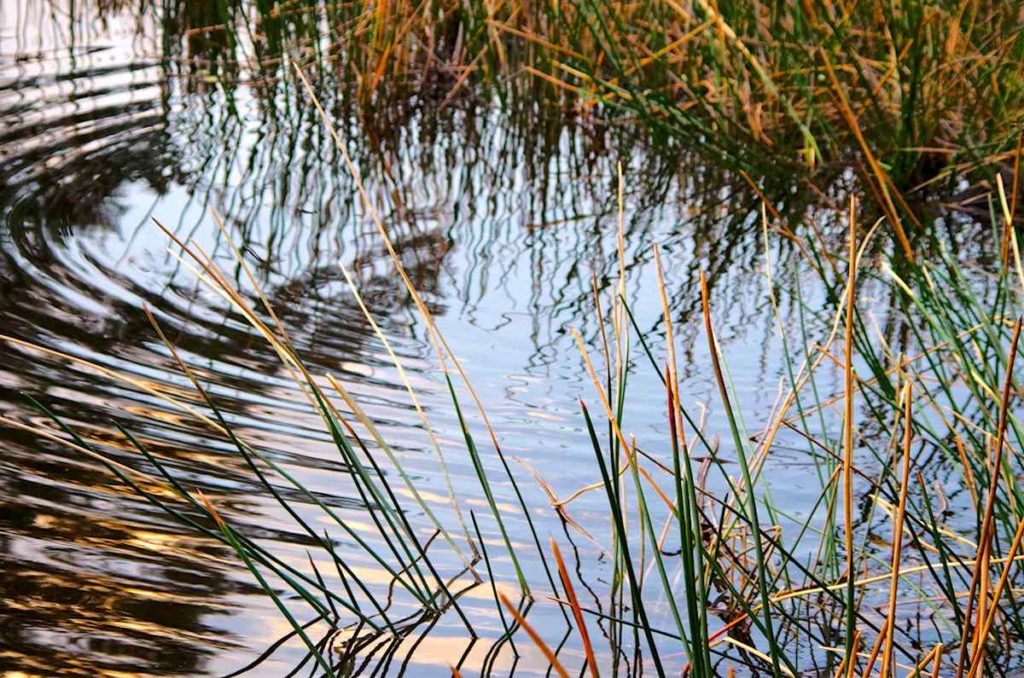
These few ripples on the water were my absolutely best attempt at photographing a platypus!
Mount Kaputar About 17-21 million years ago, this part of the country had many volcanos spewing lava out in every direction. Today, the remains of these ancient volcanos form the Nandewar Range, with Mount Kaputar (pronounced ‘Cap-you-tar’) being the highest point at 1512 metres.
It is the highest part of the Great Divide away from the Kosciuszko region. Conditions in the range can be harsh; high winds and storms strike out of nowhere and snowfall is possible, even in summer. While I was here, the temperatures on the plains below were in the high 30’s (degrees Celsius) but up here in the heights it was just above zero!
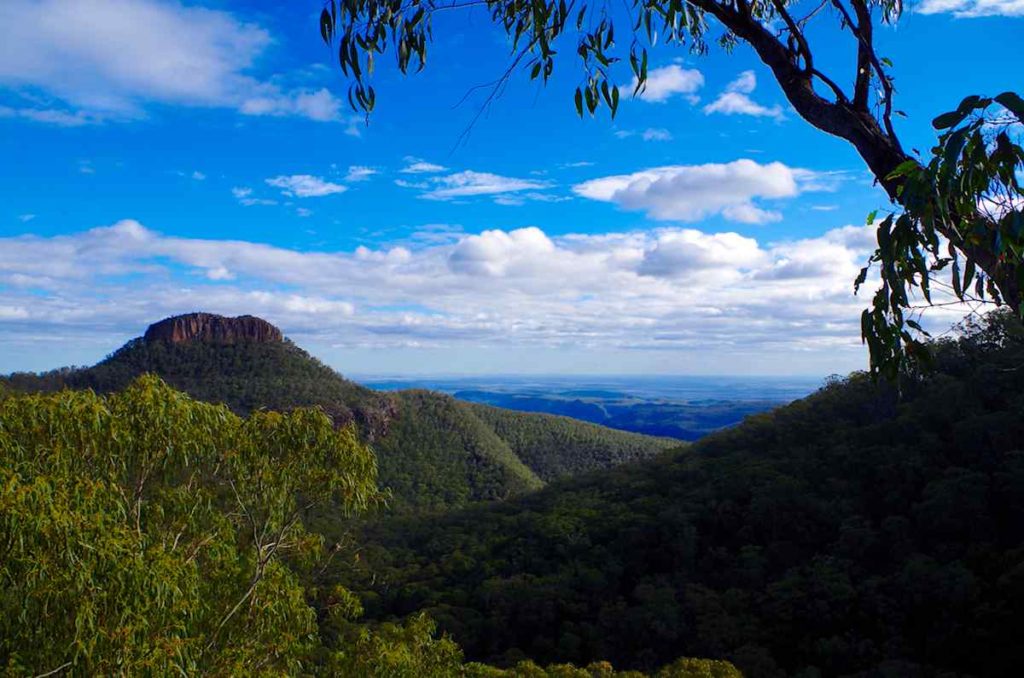
I enjoyed lots of interesting walks and each seemed to end at a lookout offering amazing and stunning views across the surrounding countryside. There are plenty of volcanic plugs and ancient lava fields, reminders of the violent volcanic past of this area.
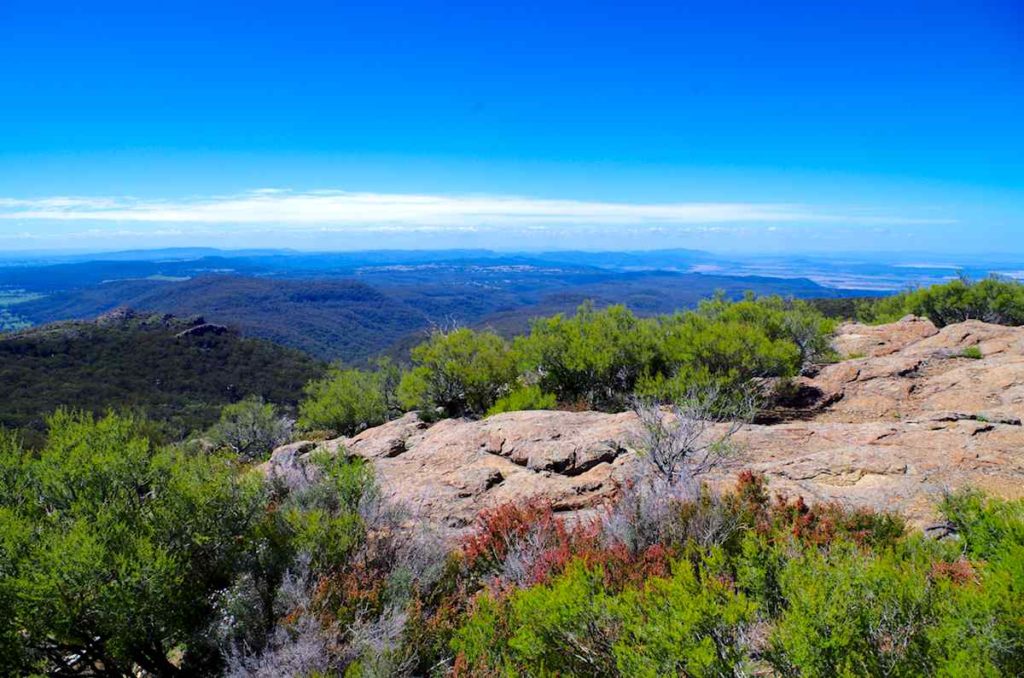
The summit of Mount Kaputar offers 360 degree views of the surrounding country and it is a spectacular vista. It was beautiful and clear when I was here and I could see a long way in every direction!
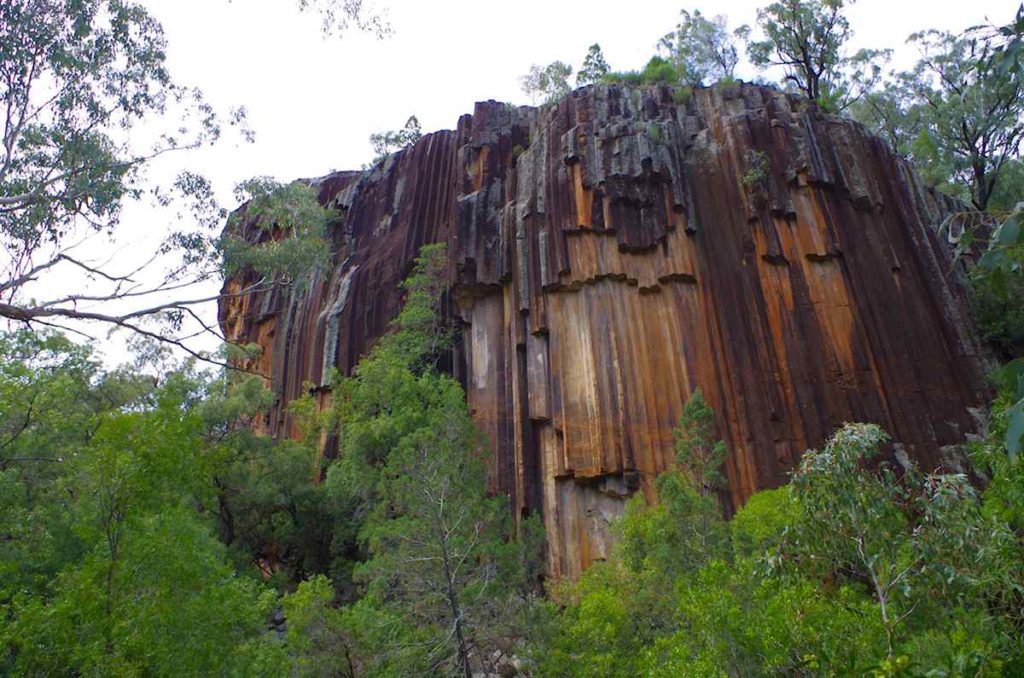
Nearby, another reminder of the volcanic past in this area is Sawn Rocks, a very spectacular geological phenomenon. The 5 and 6 sided rock columns are officially known as columnar jointing or more simply as ‘organ piping’.
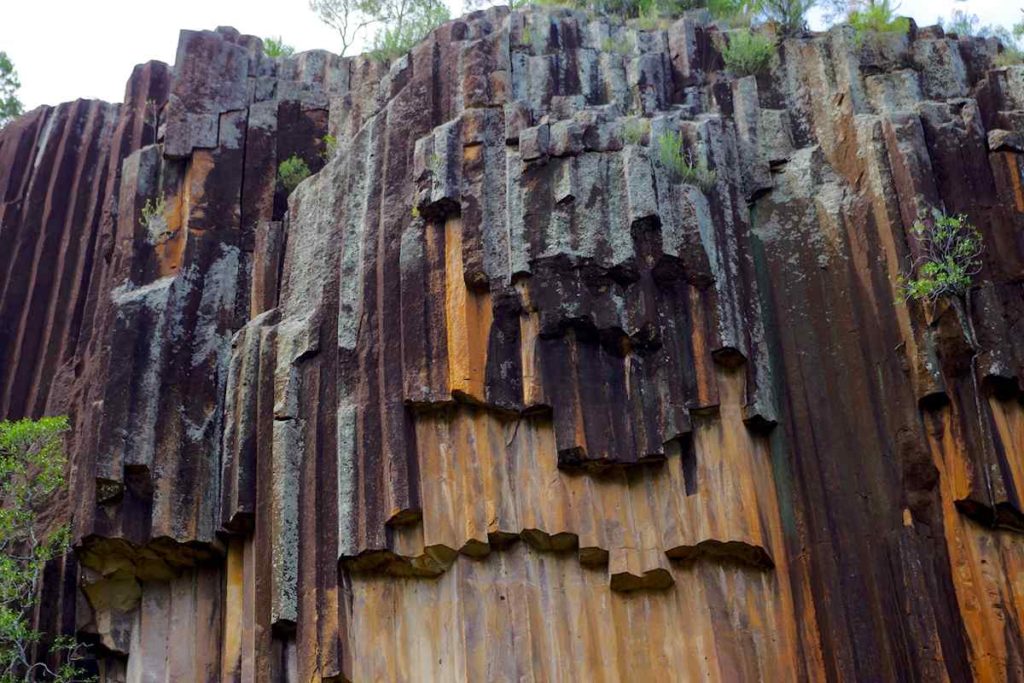
This is a really amazing place to visit and be confronted by this 40 metre high rock face, which really does makes you feel you are in a natural cathedral.
While in Mount Kaputar, I tried my hand at time-lapse photography. This is where you take images at set intervals to show changes over a long time period. When put together into a movie at normal speed, these changes appear to happen very quickly. The spectacular views and cloud formations I witnessed at Kaputar lent themselves perfectly to making impressive time-lapses.
(If you place your mouse over the video file after you click play, click on ‘YouTube’. This will open the file on its own separate page and displays the video a bit larger than here. You can also view it even larger if you wish. Make sure you have the audio up, too).
Wildlife Portrait
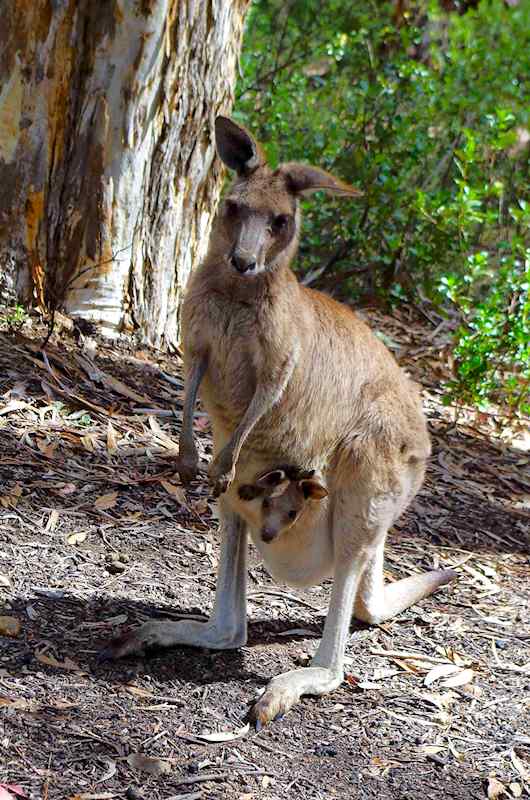
There are many kangaroos hanging around the campgrounds at Mount Kaputar and people foolishly feed them. It is bad for kangaroos to eat human food but it seems they like junk-food as much as we do. Sadly, the kangaroos now expect to be fed and can get quite aggressive if you don’t hand over your meal. This one stalked me while I was preparing my dinner, which was a bit scary, as it looks just a little bit deranged!
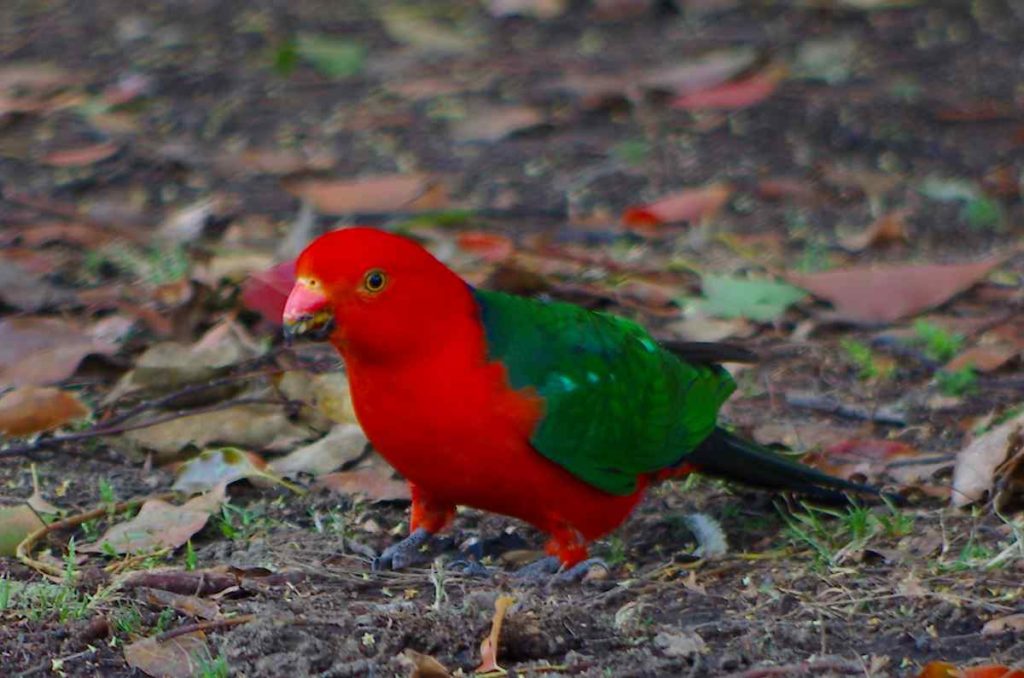
The male Australian King Parrot is an extremely bright scarlet and green and the females are also spectacular, being brilliant green with red tummies. They happily eat seeds, fruits and flowers from the ground and can become quite tame around people. These gregarious parrots are certainly a bright splash of colour in the damper forests around northern NSW and Queensland.

Border Ranges NP is situated in the ranges in the north of NSW and straddles the border into south eastern Queensland. It is a lush sub-tropical rainforest and while it did rain while I was here, I was still able to enjoy numerous walks through this beautiful area.
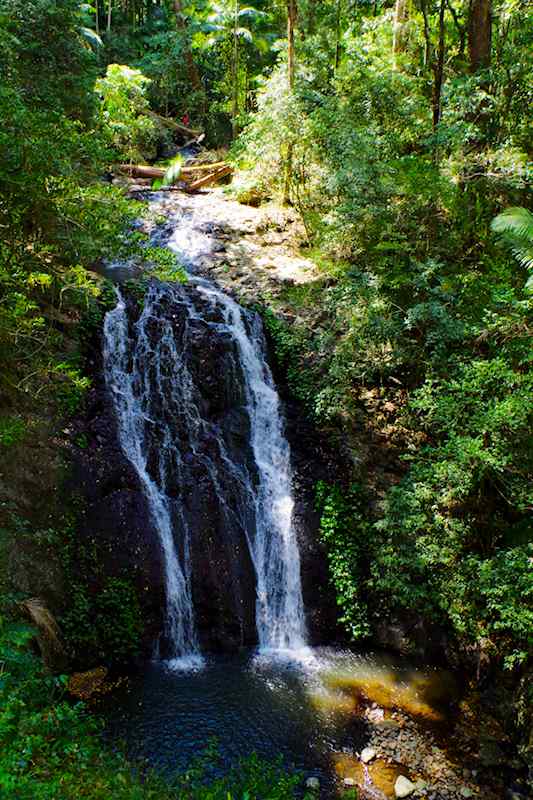
All the creeks were flowing and cascading waterfalls spilled over rocky chasms. Trees were covered in moss and thick vines hang from the canopy, giving the whole place a feeling of paradise.
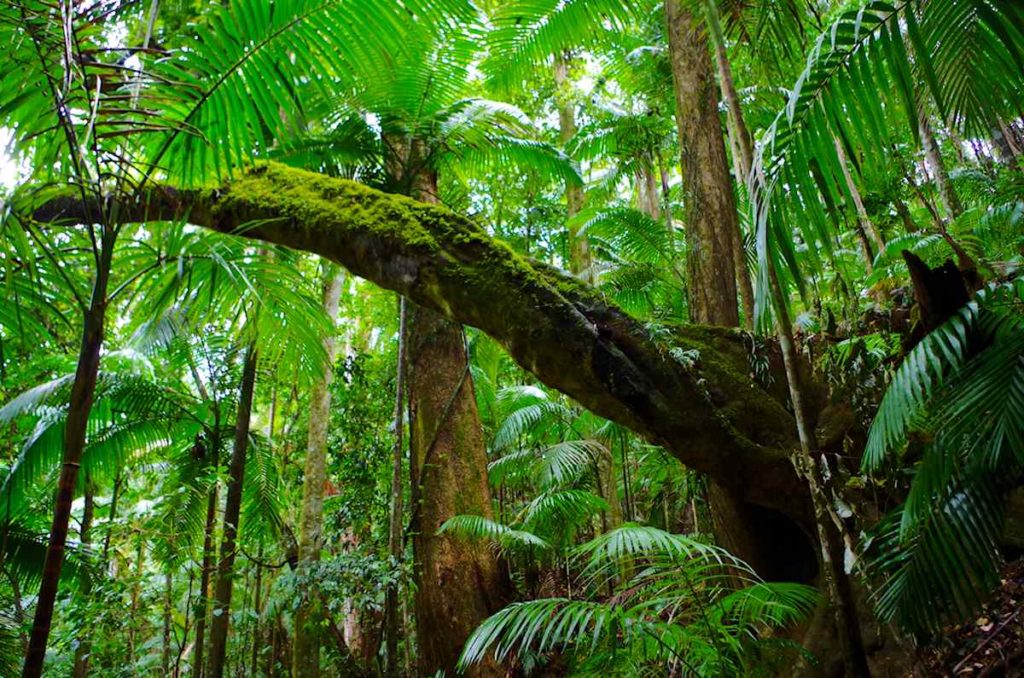
Wildlife Portrait
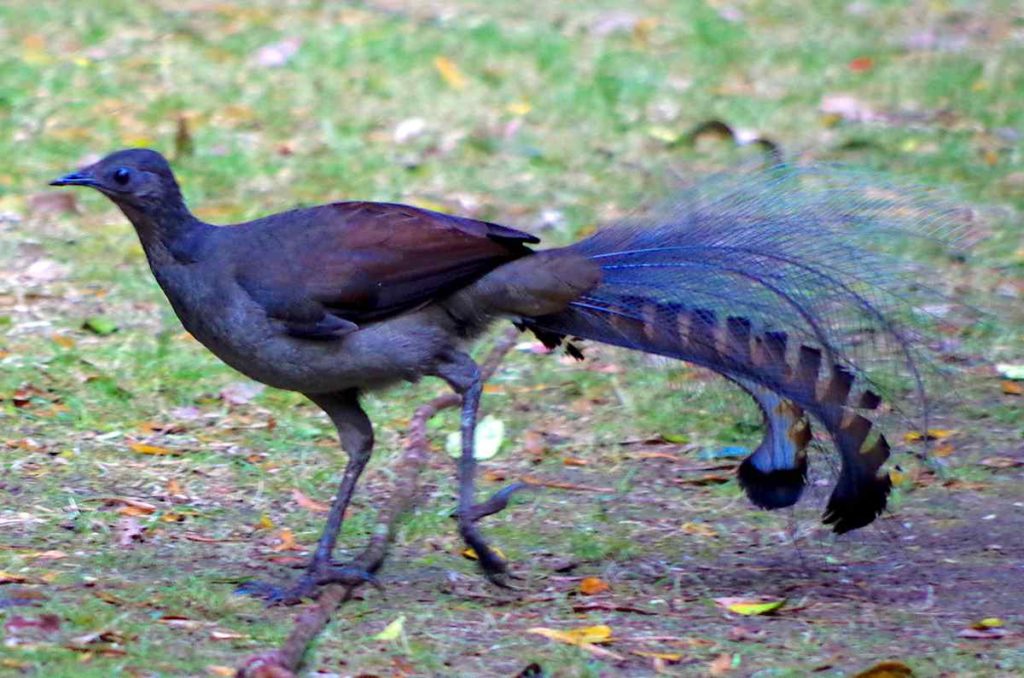
Lyrebirds call these rainforests home and happily scratch in the moist leaf-litter around the campground, looking for a snack. These amazing birds have a beautiful melodious song that is wonderful, as well as being amazing mimics; it is sometimes hard to determine if any noises you hear are real or actually made by the lyrebirds?
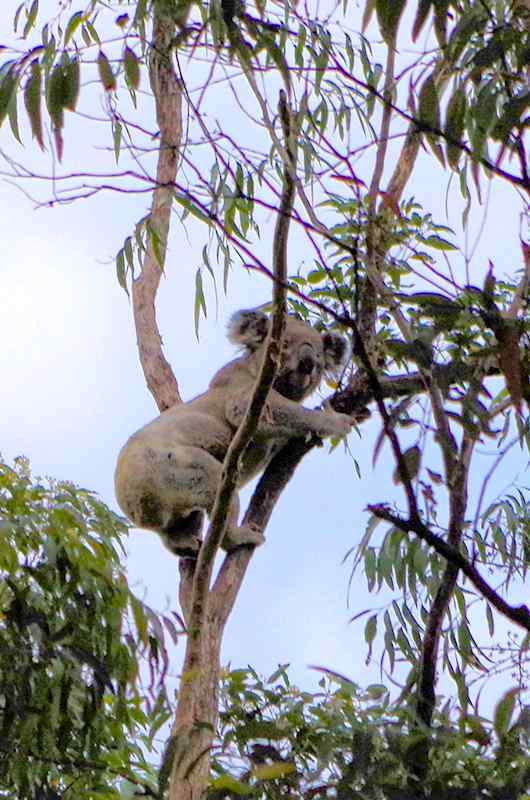
There are koalas living here too, entertaining with their antics in the treetops. They move pretty slowly through the trees and often seem to need a stop for a little rest, but they can move very quickly if they need to!
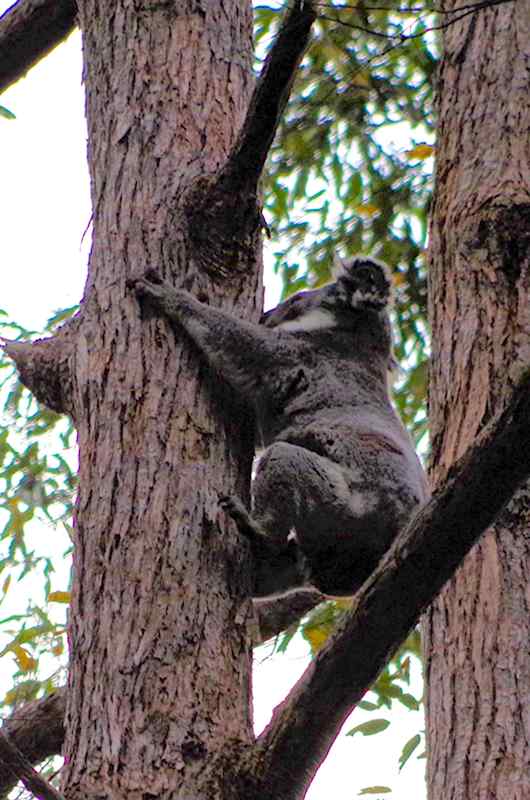
They look cute and cuddly but koalas are actually a pain to have around after dusk; they make blood-curdling grunting and screaming noises, enough to give any camper nightmares in the dark of night!
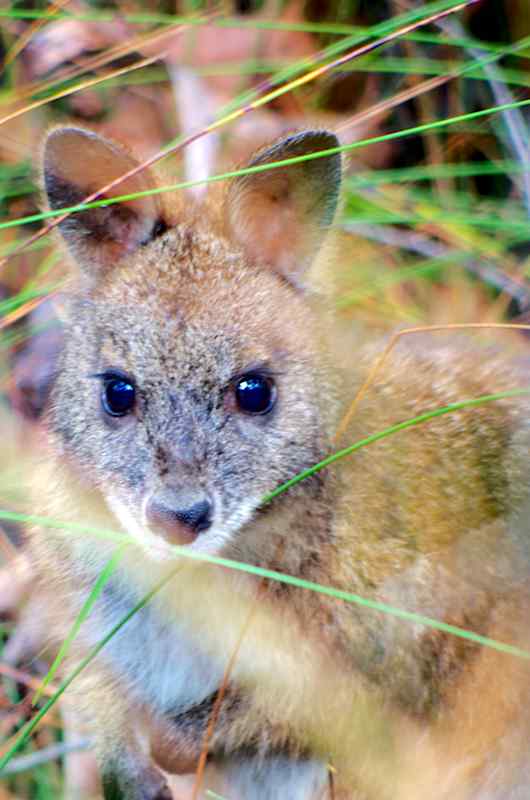
In nearby Washpool NP, I spotted this little pademelon gazing at me through the bush. These little marsupials are really cute and they hop, too!
Kwiambal NP (pronounced ‘Kigh-am-bal’) is named after the Aboriginal people who lived in the area and is located on the western slopes of the Great Divide in northern NSW. I had never heard of this park before I found it on the map and decided to visit. I am glad I did, as it has been one of my favourite places to stay during my journey.
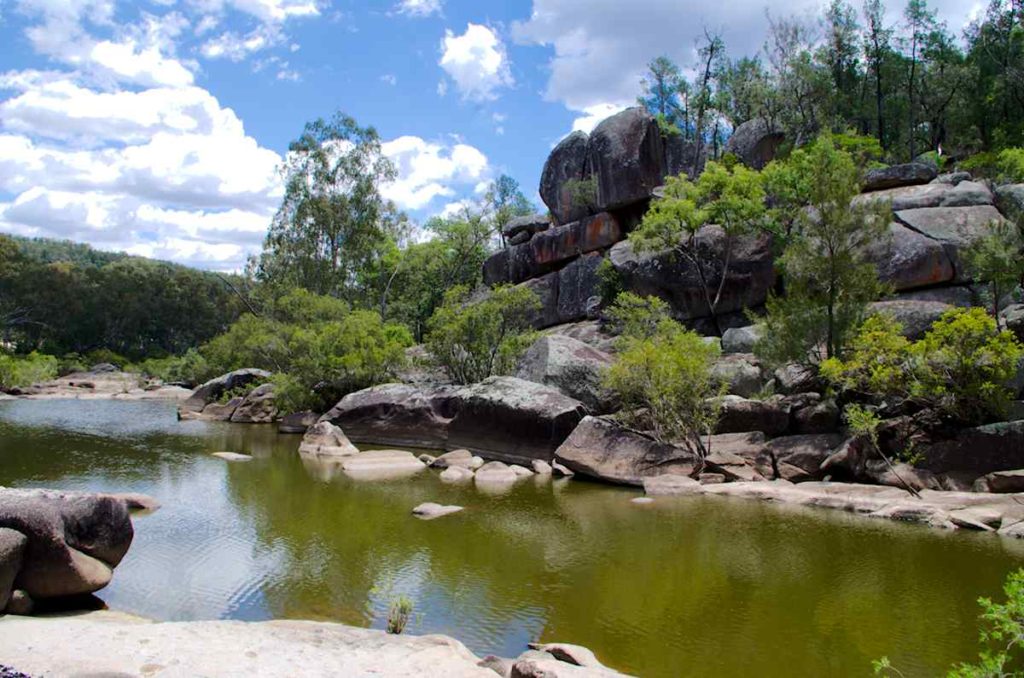
The Lemon Tree Flats campground is right on the Severn River. But looks here can be deceiving; this is no longer a wild river. Being downstream from the Pindari Dam, the water flow here is strictly controlled.
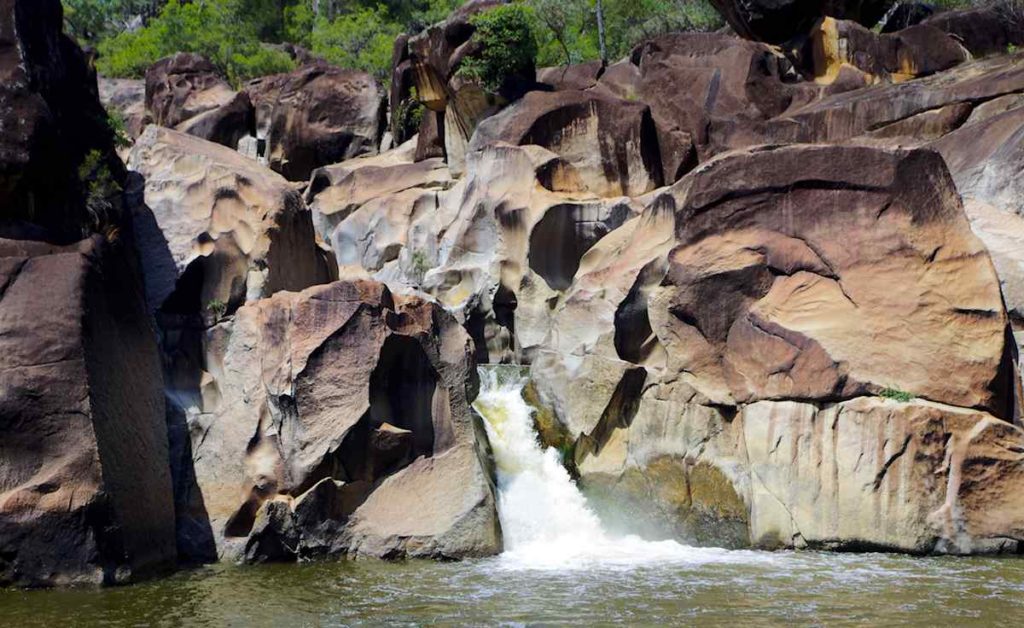
The Macintyre River also wanders through this park and merges with the Severn at the appropriately named ‘The Junction’. Macintyre Falls had some water cascading through the rocks into the pool below.
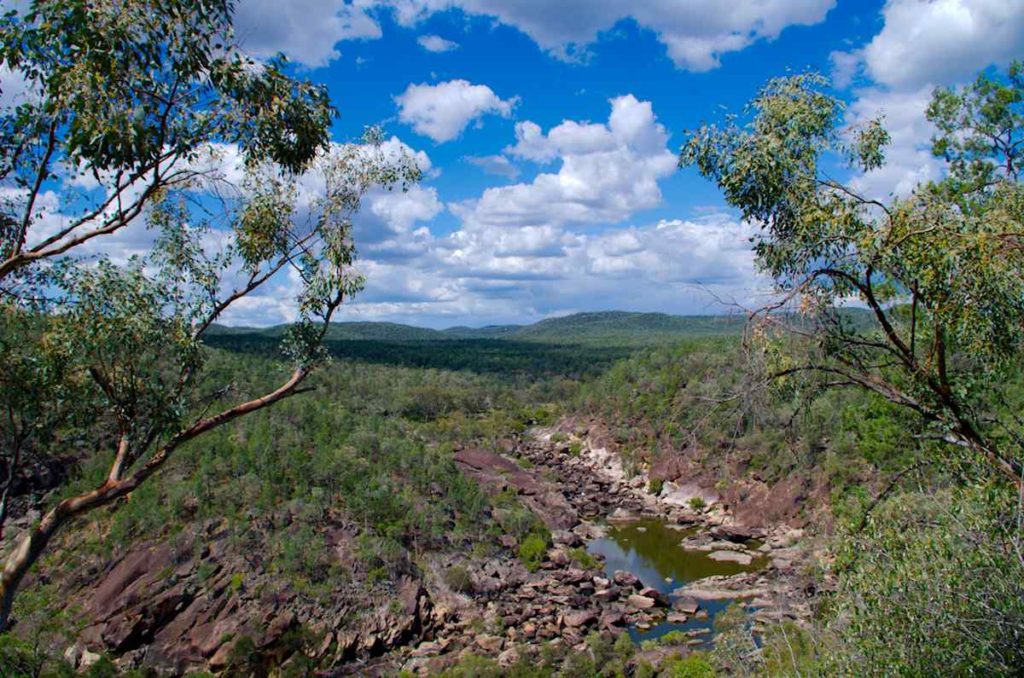
A very rough walking track from the campground leads you up a steep incline through clusters of huge granite boulders and scruffy native white cypress forests and suddenly you are confronted by a spectacular gorge cleaving the landscape in two.
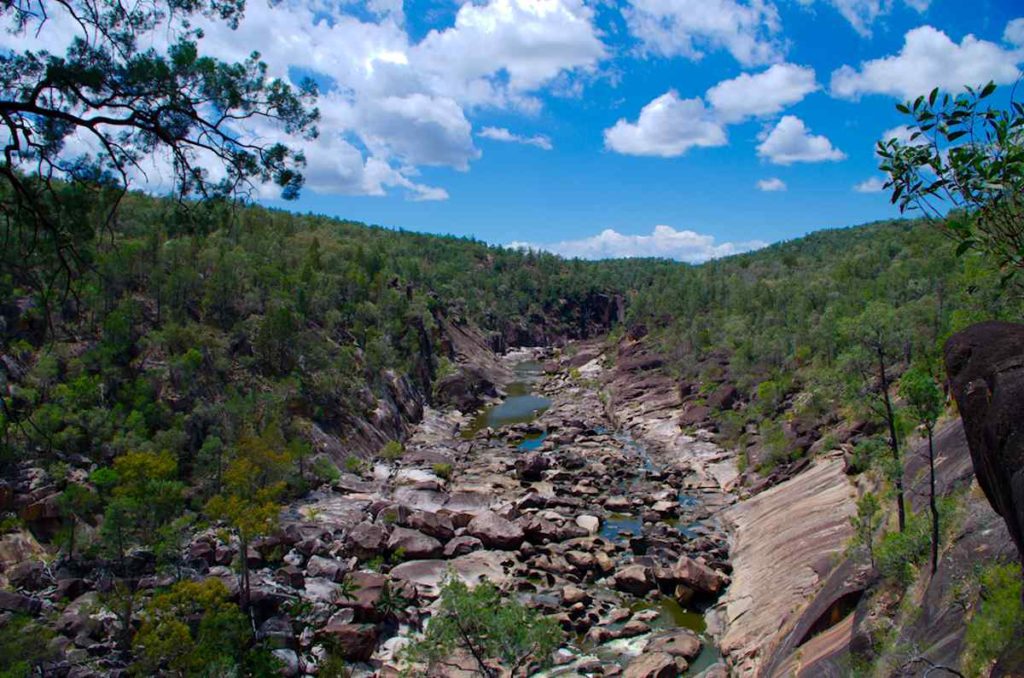
Further along your path takes you high above this gorge; it is an amazing view, especially if the river is flowing. In the canyon scarily named ‘The Dungeon’, the river has cut a deep gorge through the granite rocks, leaving a spectacular chasm.
Kwiambal was another place with remarkable landscapes and astounding cloud formations that time-lapse captured spectacularly. I need to get back to doing some more time-lapses, as they are fun to do.
Wildlife Portrait
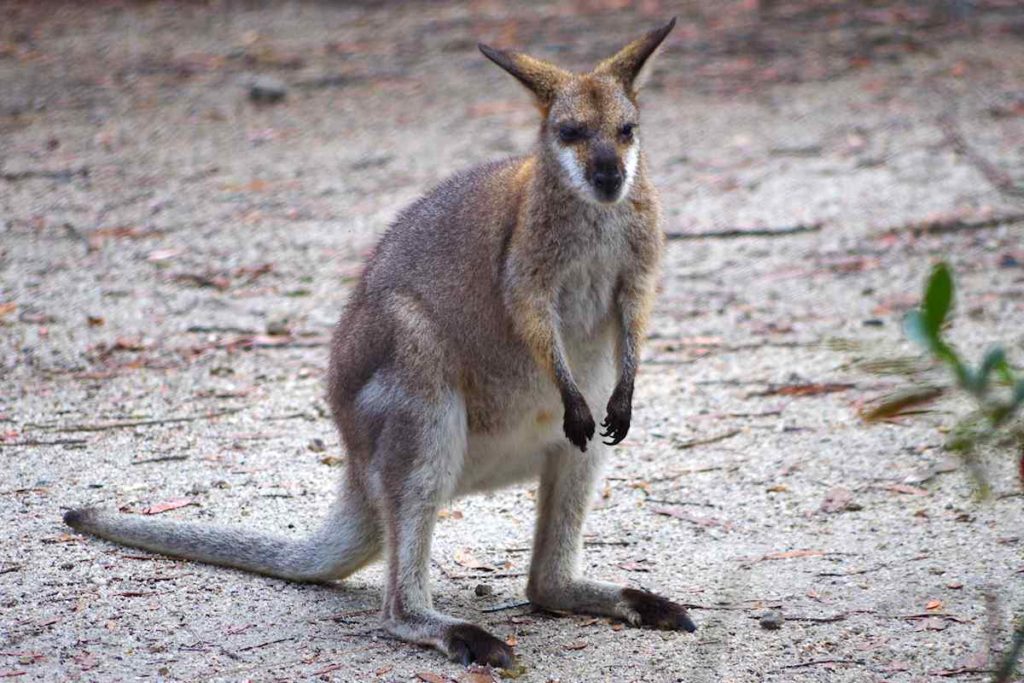
Red-Necked Wallabies live in many places I have visited. These guys make me laugh, as they do appear rather grumpy. But they are as laid-back as any other wallaby, spending their days lazing in the sun.
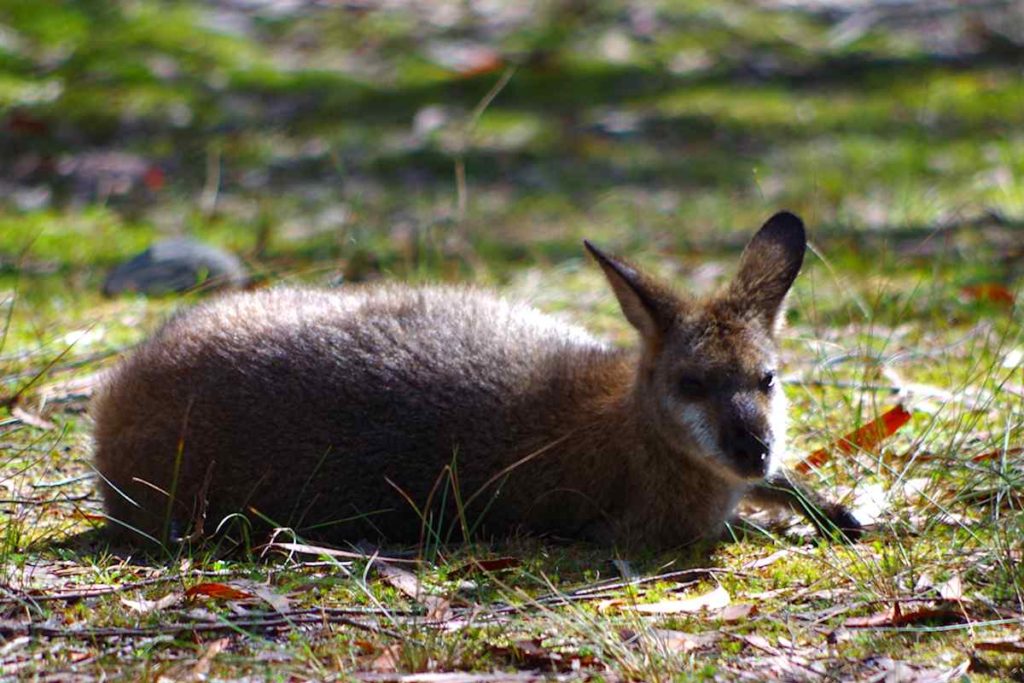
These wallaroos are massive, which makes them very impressive. They look like the hooligans of the wallaby world and I wouldn’t want to get on the wrong side of one!
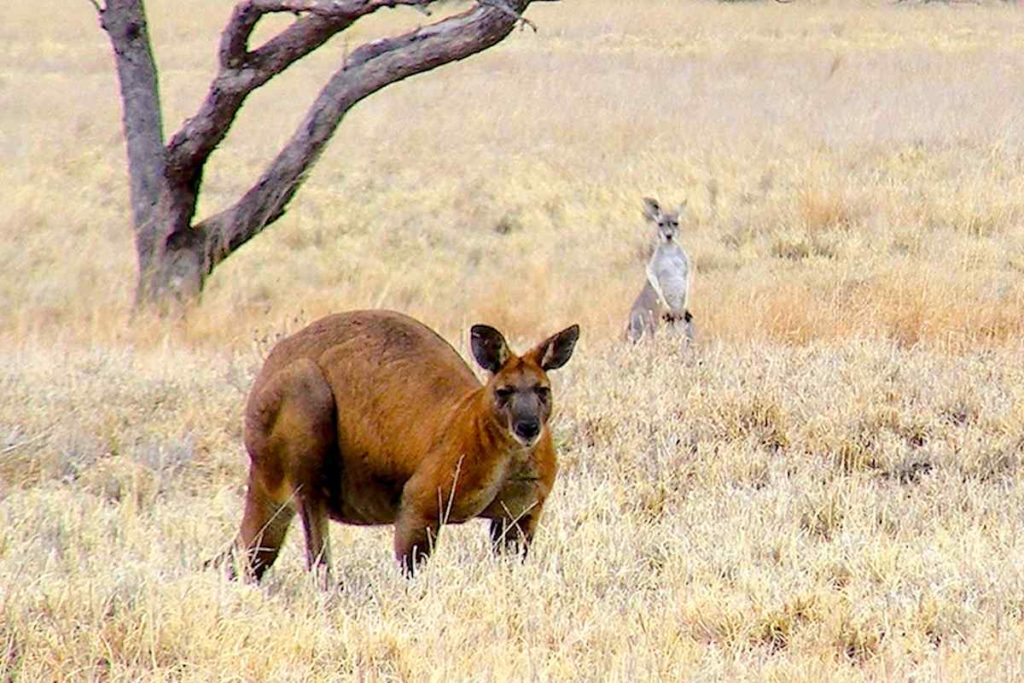
Geehi
Located below the Main Range in Kosciuszko National Park, Geehi sits in a peaceful valley and offers amazing views to our tallest mountains looming high overhead. The Swampy Plain River flows through the valley; the water is crystal clear and freezing cold, even in summer.
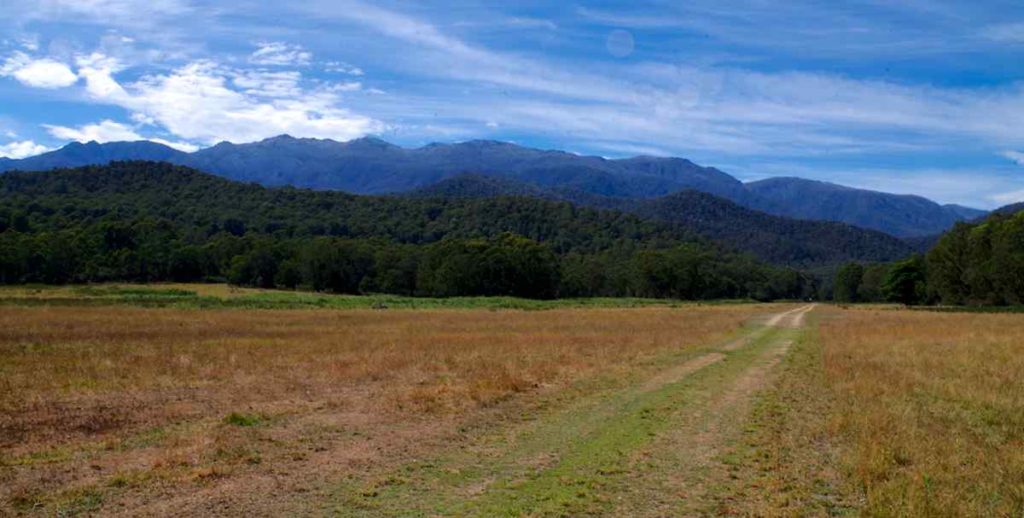
It was high summer, so there was no snow visible on these mountains but in winter Geehi is usually snowed in and inaccessible, except maybe to cross-country skiers. Mount Kosciuszko itself is not visible from here, being hidden from view behind these closer peaks.
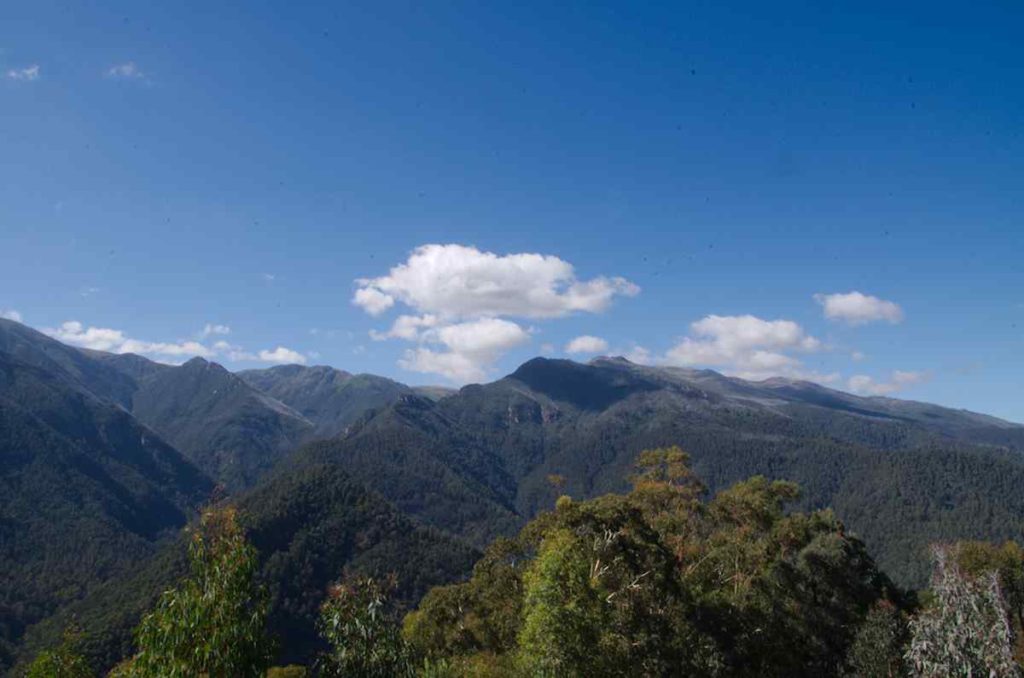
As it was hot, I did swim in the Swampy Plain River. I say swim, but the water was actually pretty shallow, so it was more of a wallow, really…
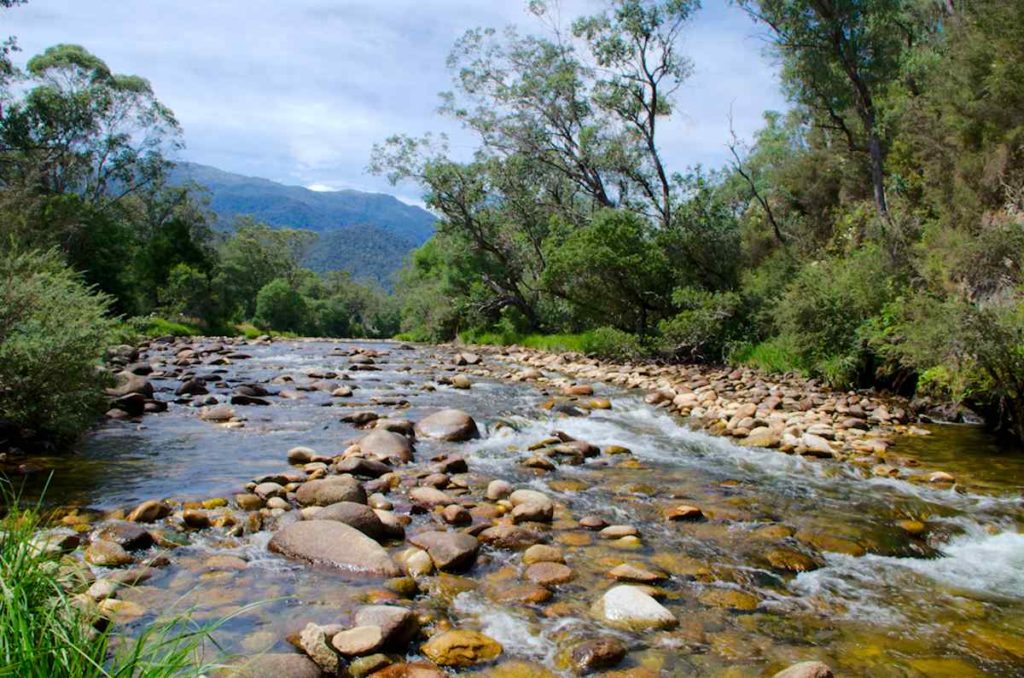
But very refreshing, nevertheless!
Wildlife Portrait
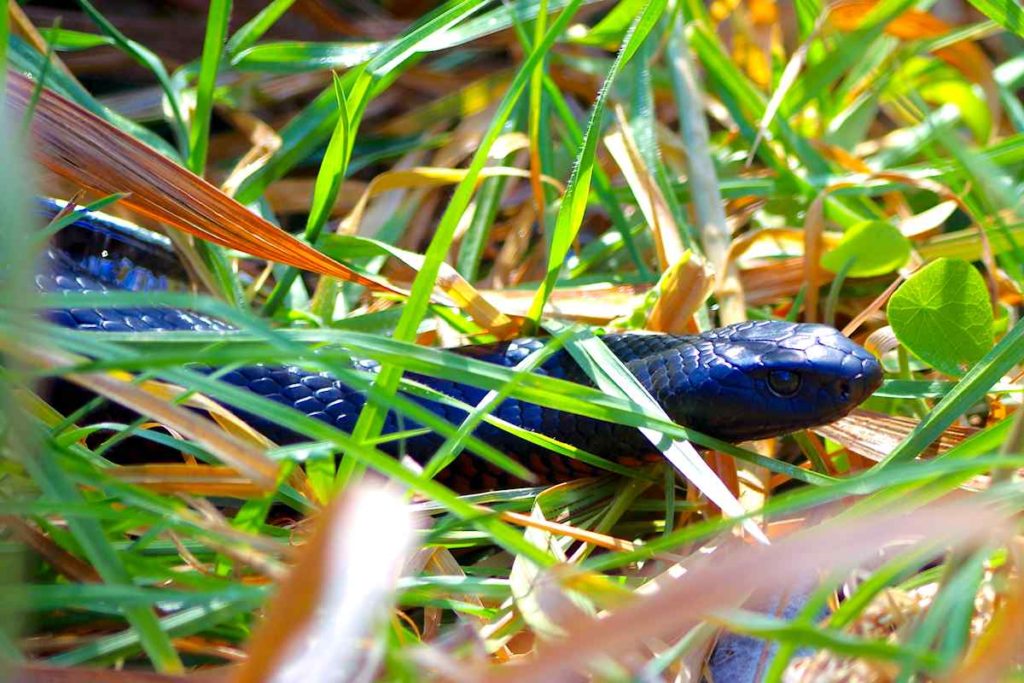
This very healthy looking red-bellied black snake and I eyed each other for a while, before the snake slithered off into the long grass. Red-bellies tend to be shy and try to avoid human contact if they can. I quite often see them in the bush and they are beautiful snakes, even if they are poisonous.
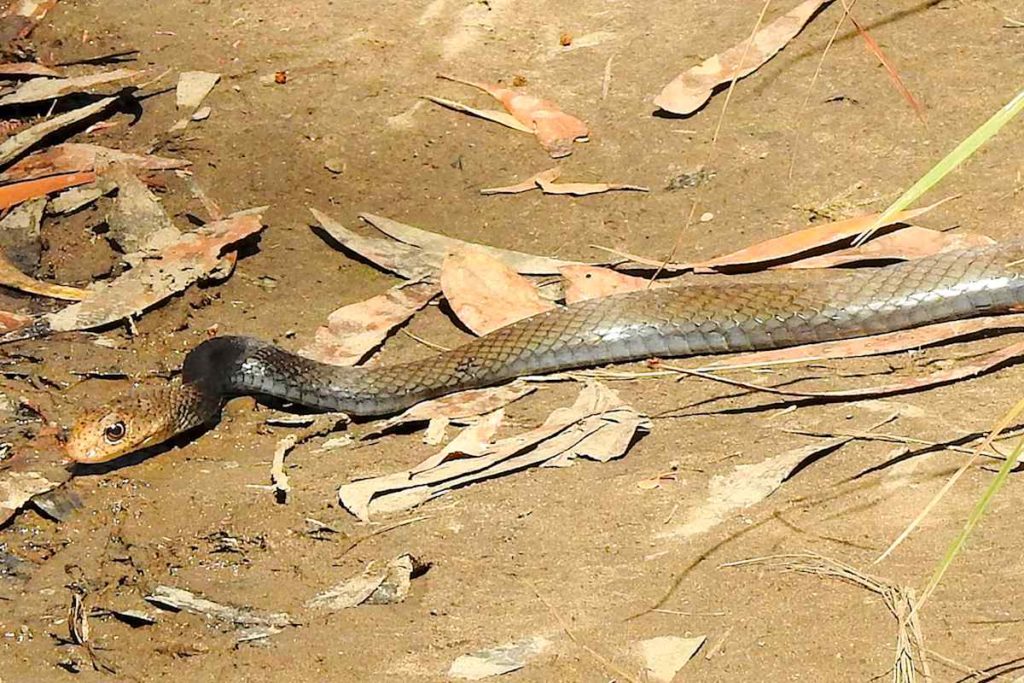
Well, it is brown and it is a snake, so best treated with extreme caution! I am not sure what species this is; I consulted my snake book and the thin neck and large eye means it could be a taipan, so is potentially very poisonous. I encountered this one on a hot afternoon in the Northern Territory. It was drinking from a puddle on the track I was walking along and was surprisingly well camouflaged against the ground. Brown snakes can be pretty cantankerous if the mood takes them; I was glad when it went off into the undergrowth and I could continue my walk.
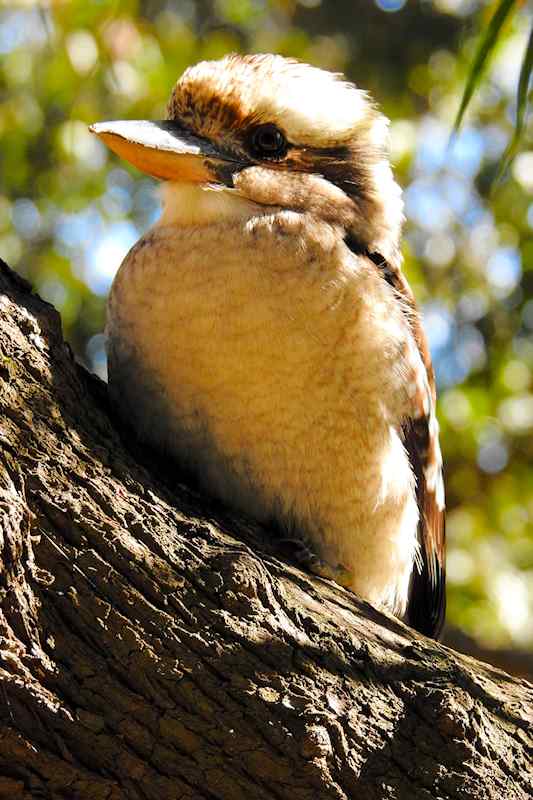
Ha! Don’t let that enigmatic little smile fool you. Those dark and beady eyes are the eyes of a shameless opportunist, just waiting for you to have a momentary lapse of concentration while you are enjoying your meal outside. Although they appear and sound very jolly, Kookaburras are fast and efficient hunters and will swoop in on silent wings and brazenly steal the food right out of your mouth – literally! I guess if you count poisonous snakes as dinner, confronting mere humans is not going to worry you, at all.
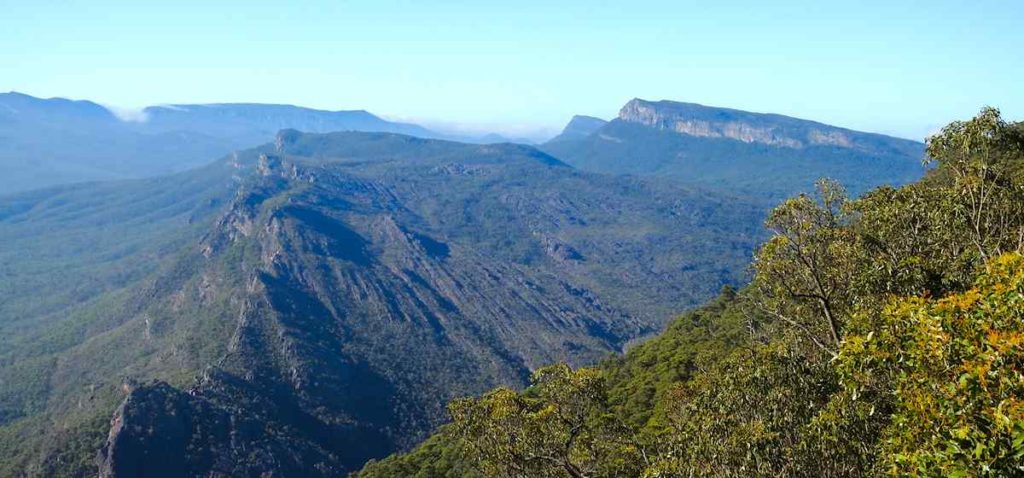
The Grampians is a mountain range in western Victoria. As a national park, it is pretty well developed and there were masses of visitors too. With bitumen roads and formed concrete paths and steps leading to most outlooks, I realised that most people are unlikely to get their boots dirty here!
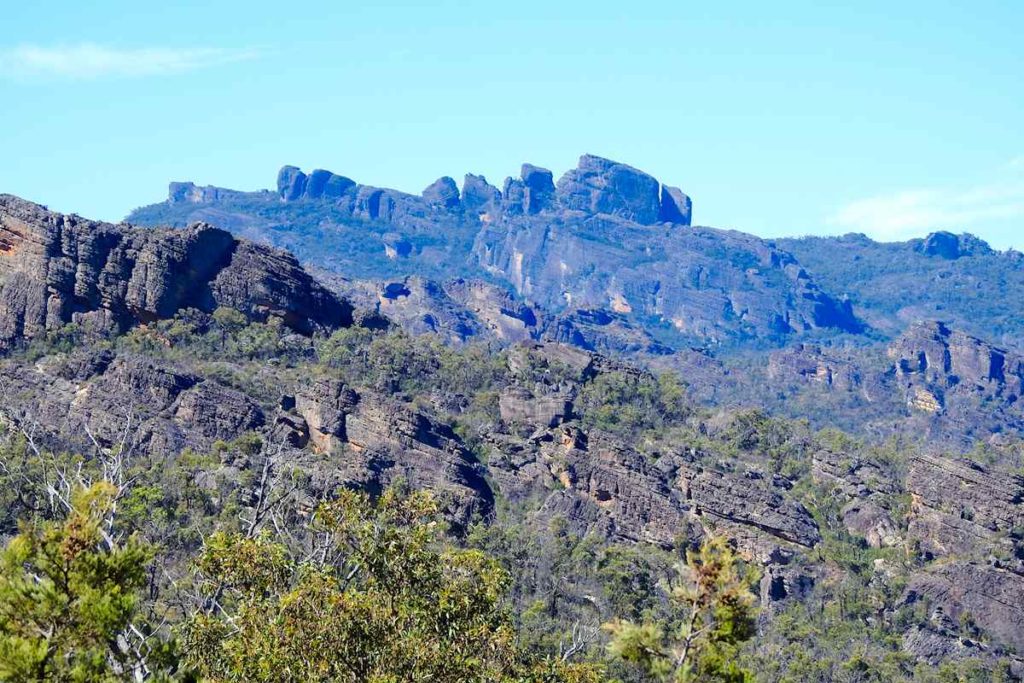
As I wanted to get away from all that ‘civilization’, I scooted off the main roads and headed along some dirt roads into the wilder sections of the park.
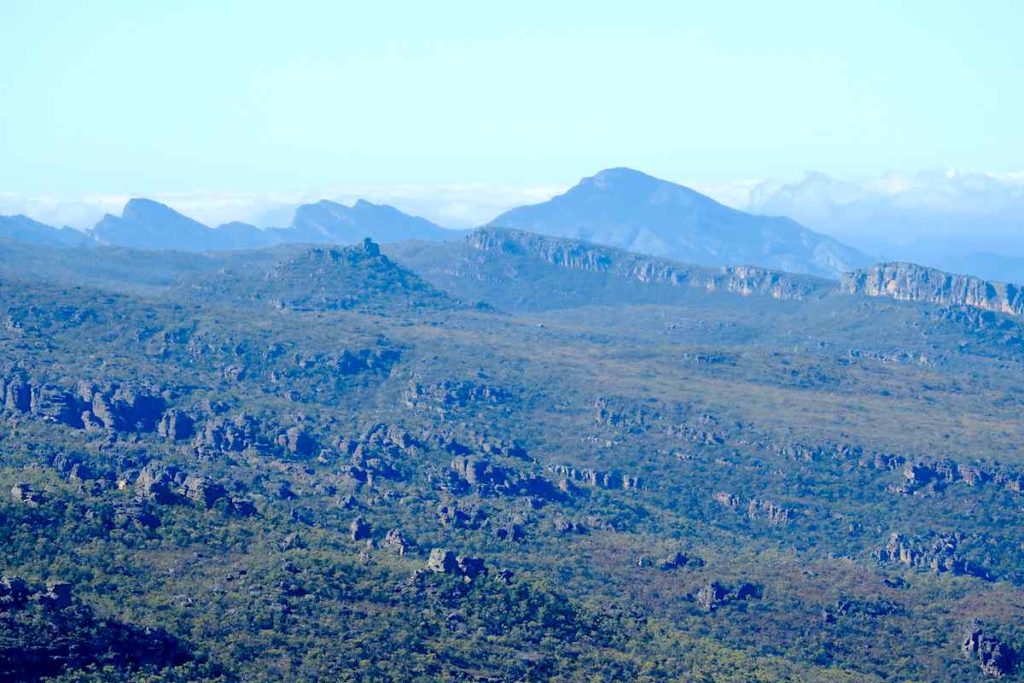
This afforded me some spectacular views and while some of the driving was rough, it meant there were less people around.
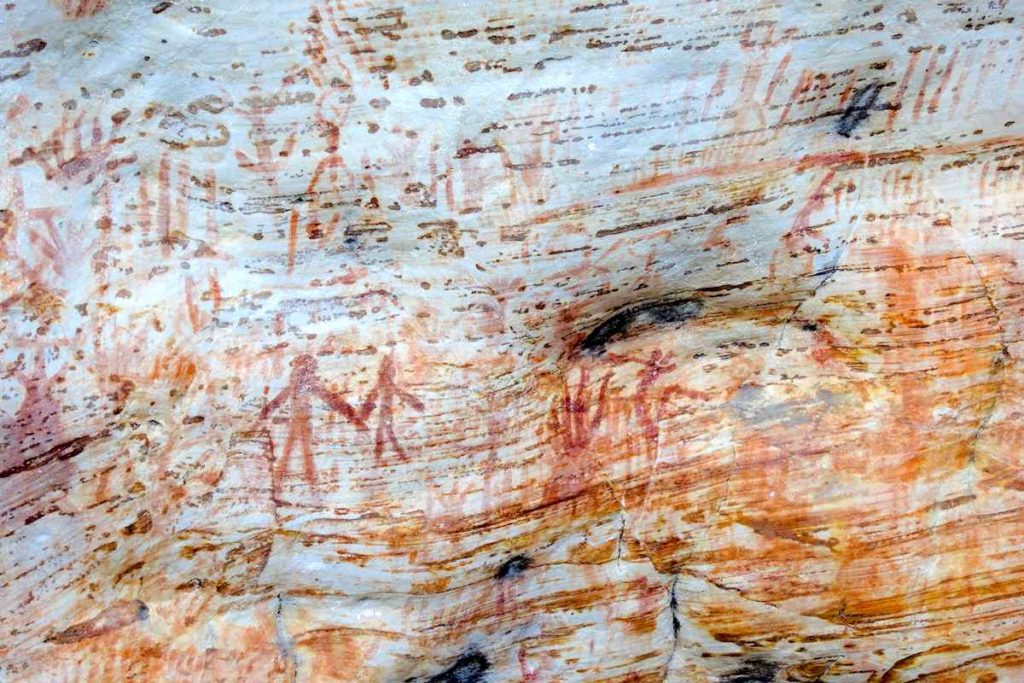
Aboriginal people lived here and have left some beautiful art sites for us to contemplate. Of course, much of the indigenous history has been lost since Europeans came to the area in the 1840’s and sadly, interpretations of many of the amazing rock art is now gone.
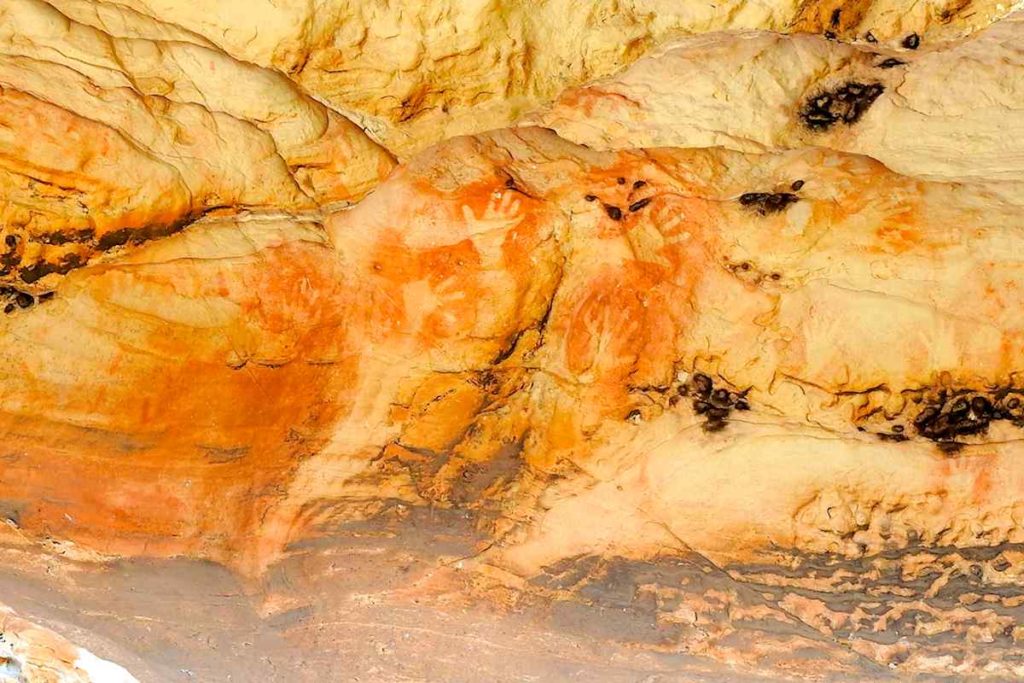
Some art shows human figures and may represent ancestral beings. I like to think handprints were like early family portraits. I imagine that in the past, people had the knowledge of who had made these handprints.
Wildlife Portrait
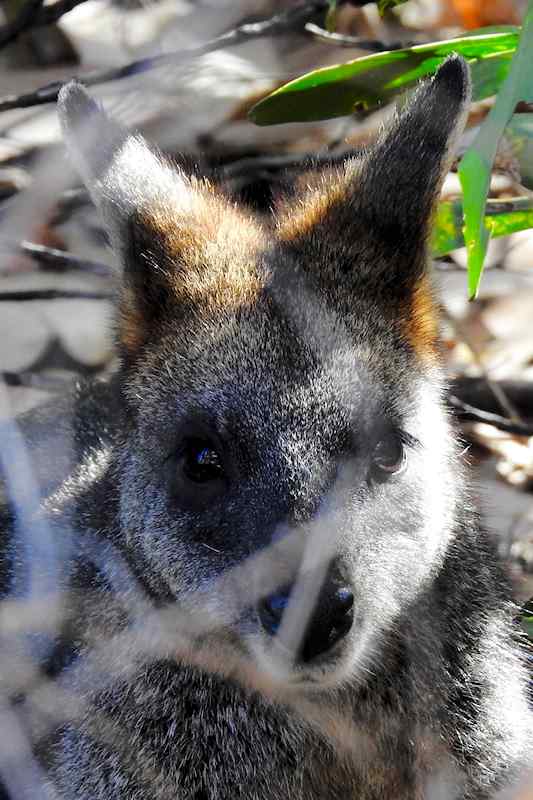
Wandering through the bush, I heard something rustle close to me. Looking around, I spotted another little pademelon moving in the thick undergrowth. These little guys have such pretty faces and they like to hide in thick scrub.
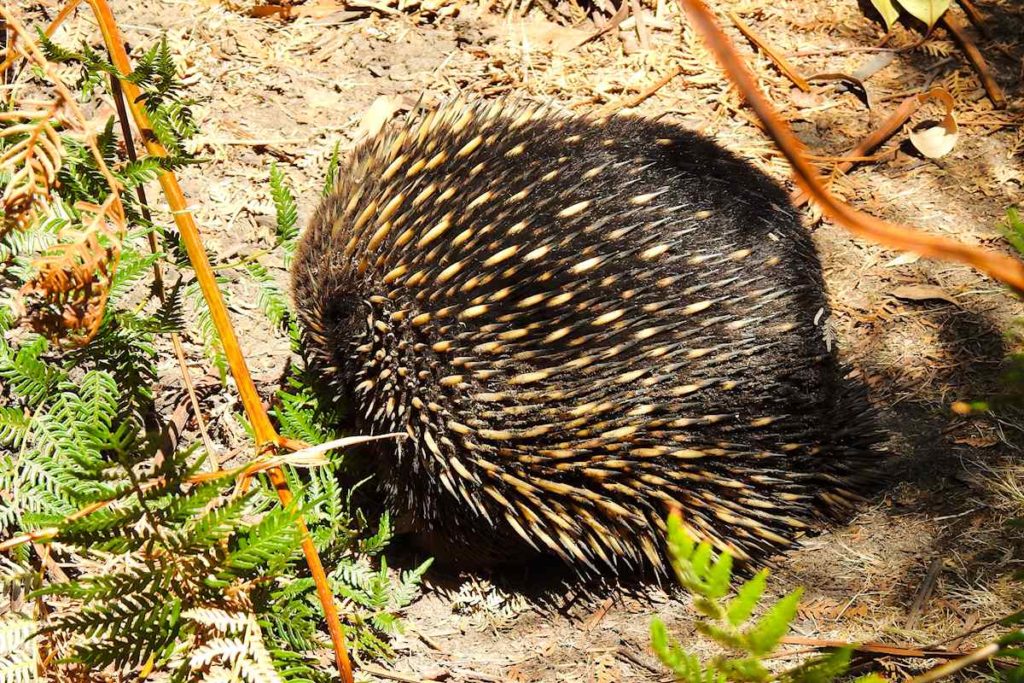
This rather large echidna was snuffling across the track as I wandered back to the campground from a walk.
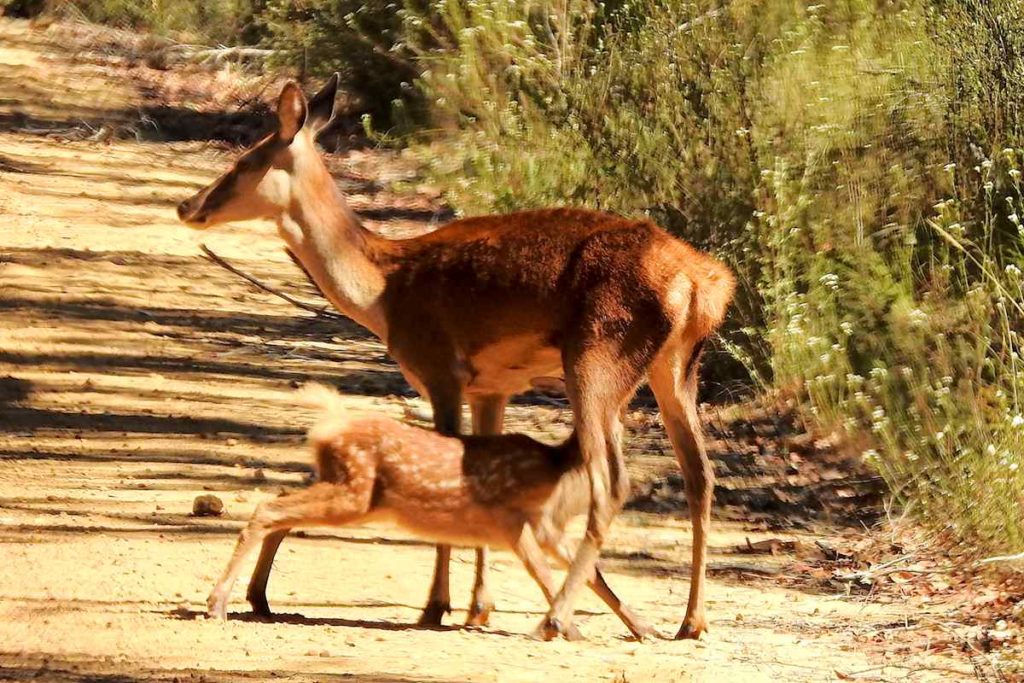
Deer live in this park and this fawn was busy having a feed while mum kept a wary eye out. But deer are not native, so are considered feral animals in this park.
Mutawintji NP is located in far western NSW. Mutawintji is the local Aboriginal name and means ‘place of green grass and waterholes’. Well, I was here in the dry heat of summer and as you can probably see from my photos, there was neither grass nor water!
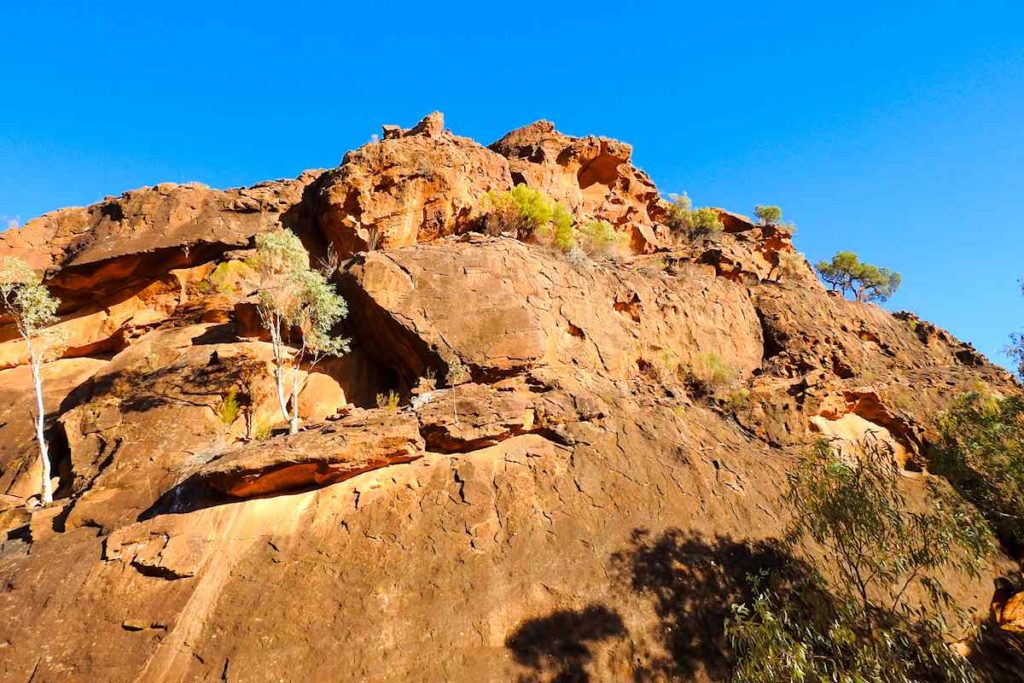
There are some amazing walks to do in this wild and arid place, many utilising the dry creek beds as the path into the hot, red rocks of the gorges.
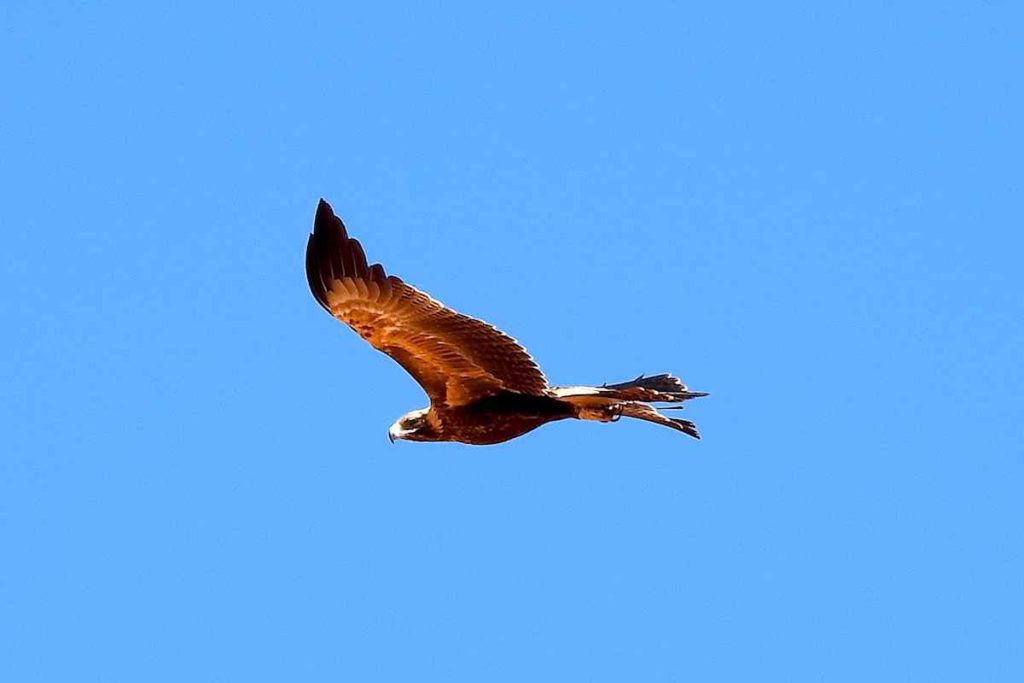
As I walked, there were many Wedge-tailed eagles riding the thermals above the rocks. It is wonderful to see these birds gliding on the updrafts on a hot morning.
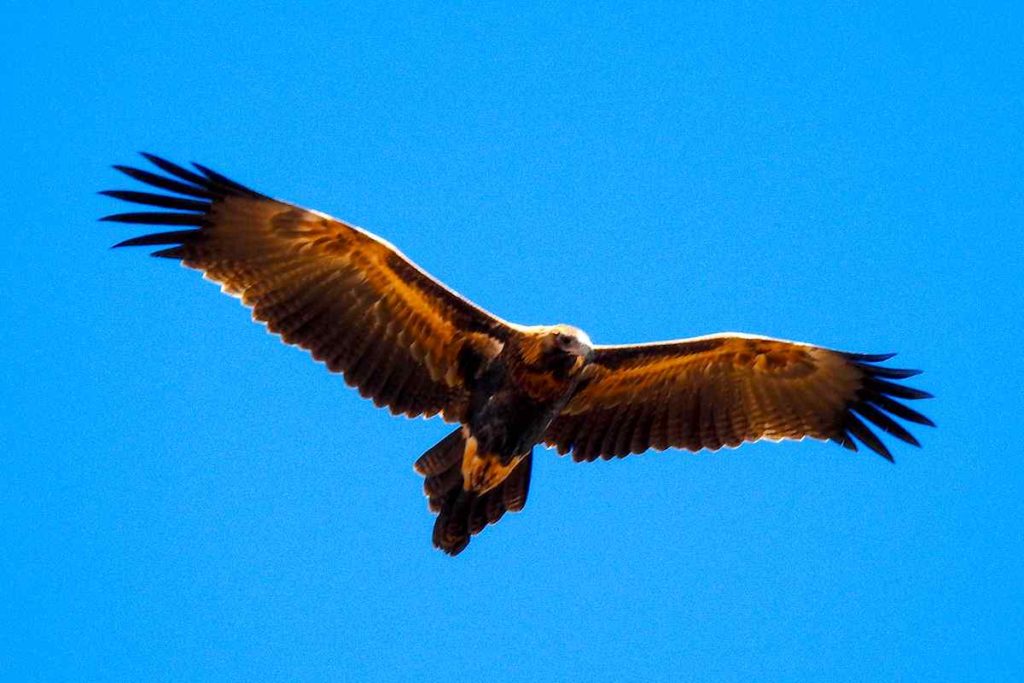
As I climbed higher, they seemed curious to my presence and often swooped very low overhead, which did not make me very comfortable – these are big birds. I had the feeling they were sizing me up for breakfast!
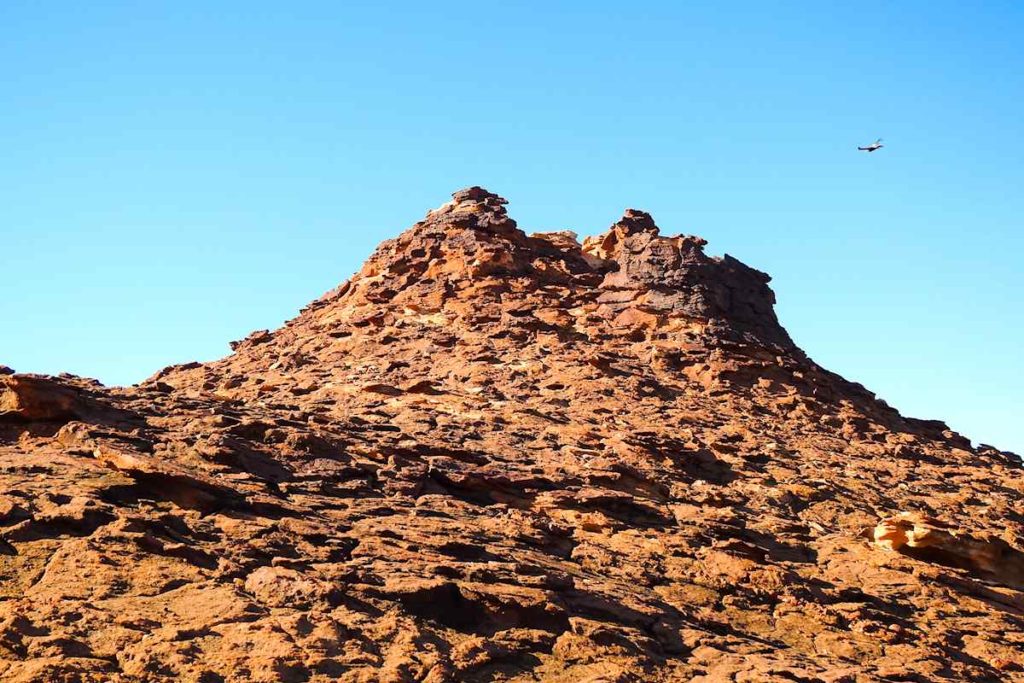
This is a dry and harsh environment, but Aboriginal people lived here for thousands of years. Many caves and overhangs of the rocky gorges have been used by these people and contain numerous significant artworks.
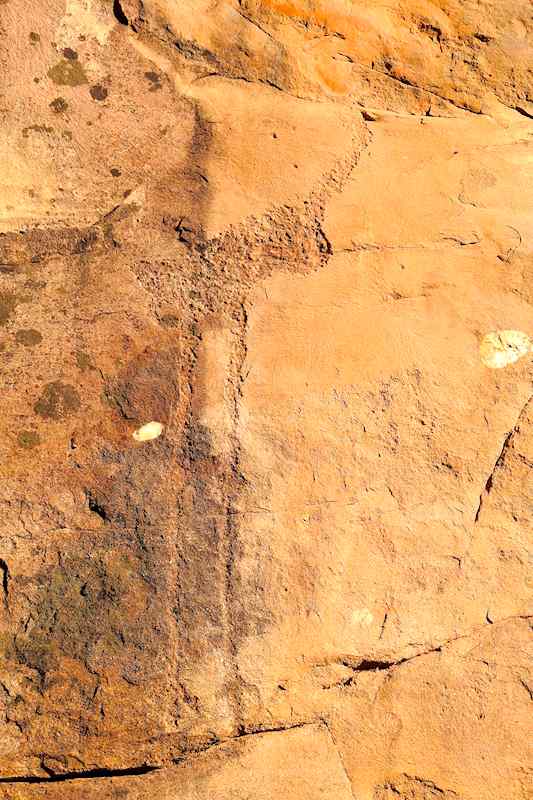
One rock faces displays a beautiful engraving of a dancing brolga, which is a rare visitor to this arid area.
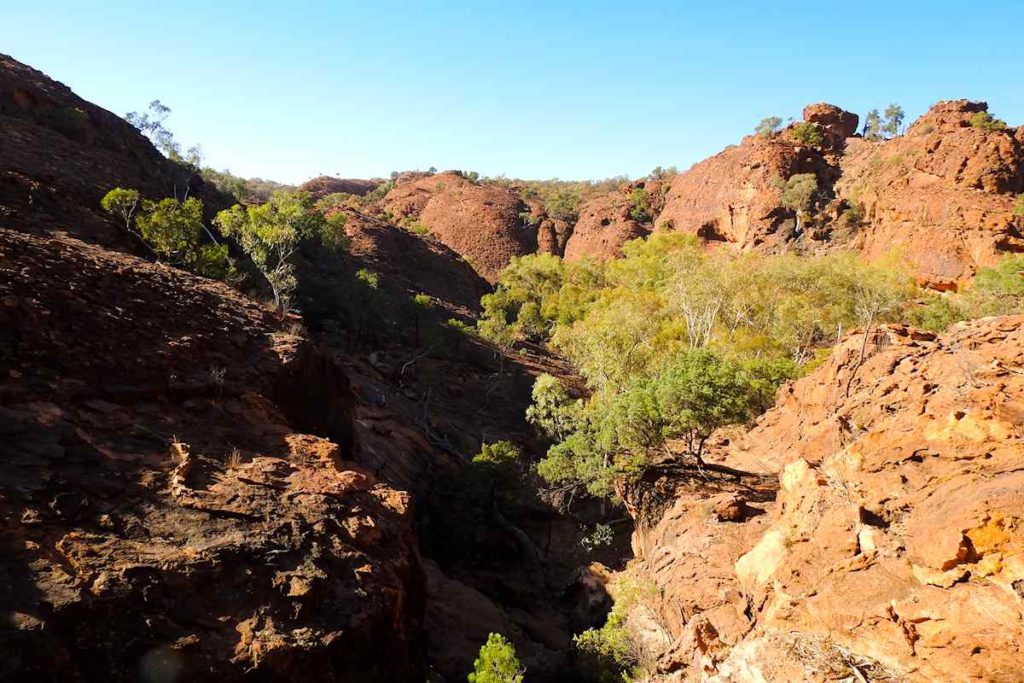
European history here started in the 1860’s and this area was taken over as pastoral leases and the Aboriginal lifestyle displaced. The main road from Broken Hill to the rich opal fields of White Cliffs passed through here and the ruins of the Rockholes Hotel, built in the early 1900’s, are still visible in the dust today.
Wildlife Portrait
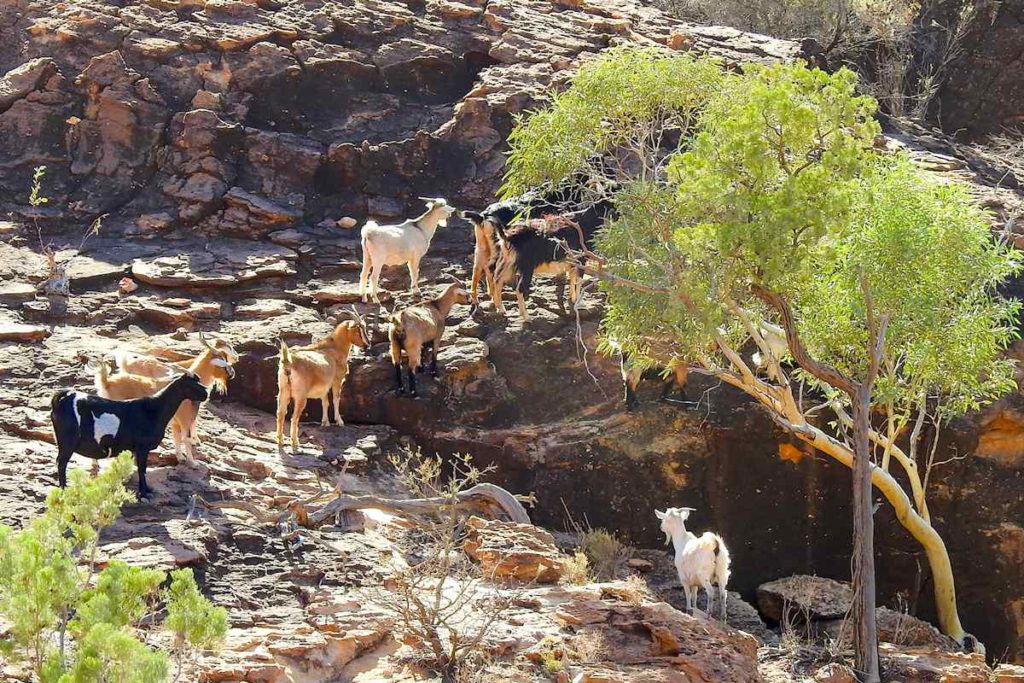
Many National Parks are overrun with feral goats. These Mutawintji goats are believed to be the descendants of those originally brought to the area by Europeans in the early 1900’s. As usual, these feral animals are now present in huge numbers and must be culled to try and curtail the massive damage they do to the native environment.
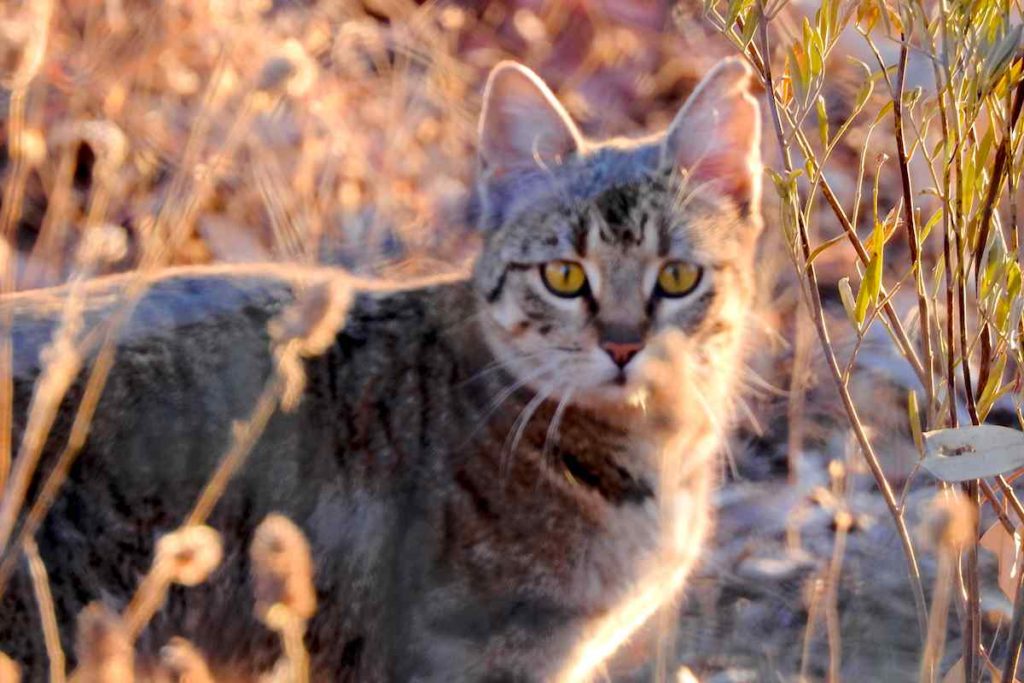
Boo! Hiss! Feral cats are the real baddies in the bush and they are everywhere. Don’t be fooled, these are no longer your nice domestic pussy-cats; they are efficient and callous hunters. I snapped this ‘moggie’ in Central Australia where it was a long way from anywhere and it was obviously living well! Sadly, feral cats are prolific breeders and do massive damage to our native species, especially our smaller wildlife that have no defenses against these vicious intruders.

